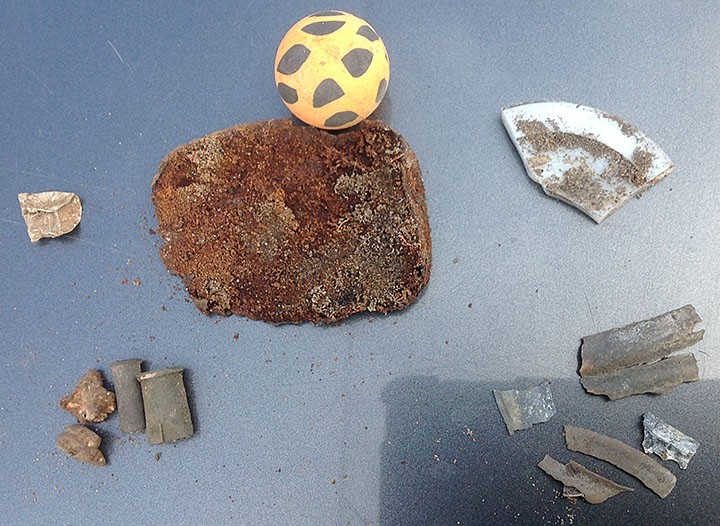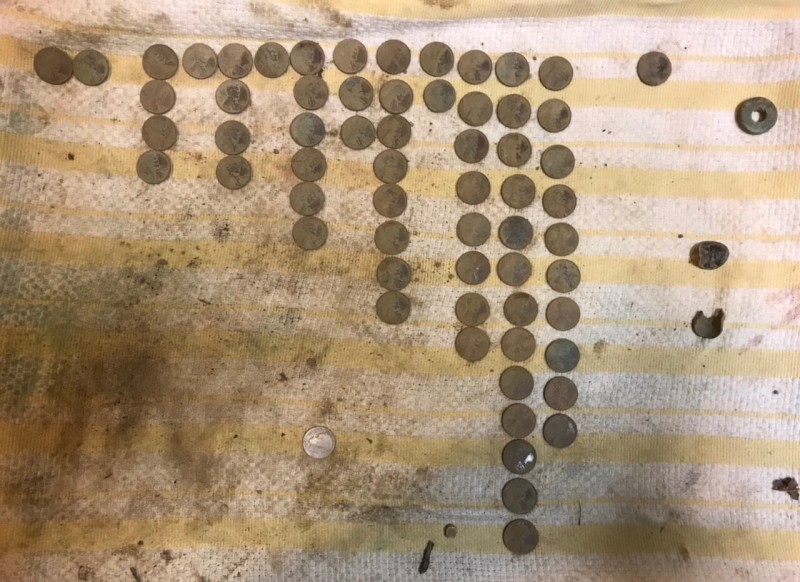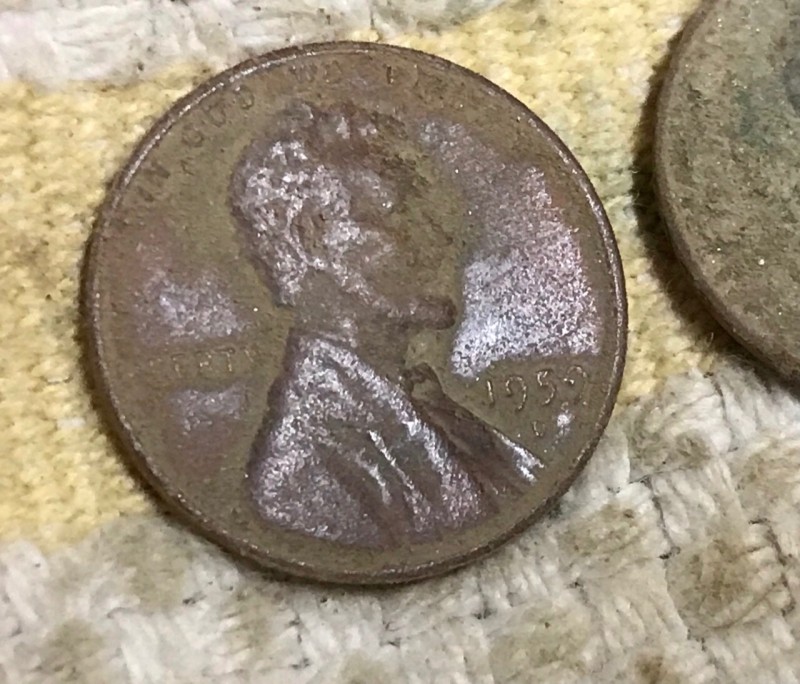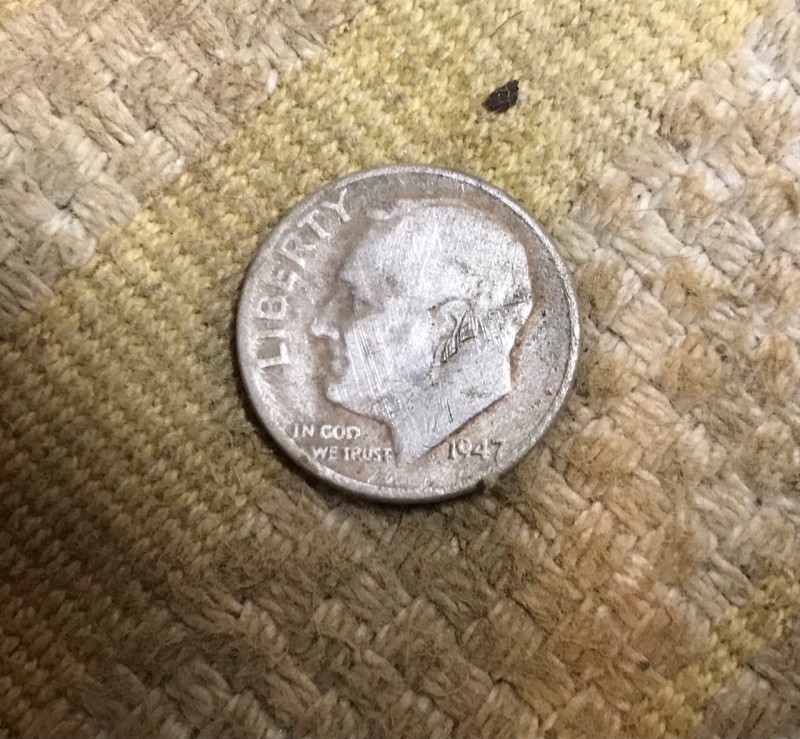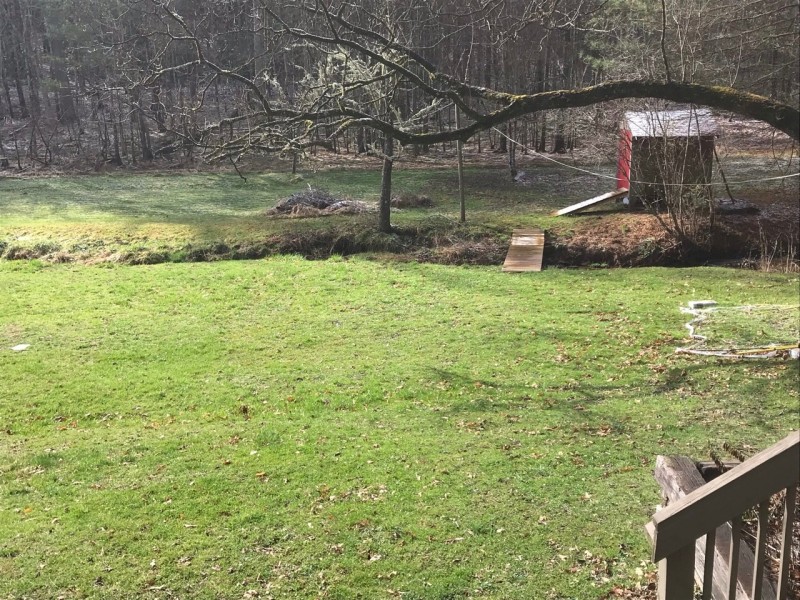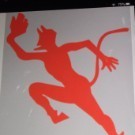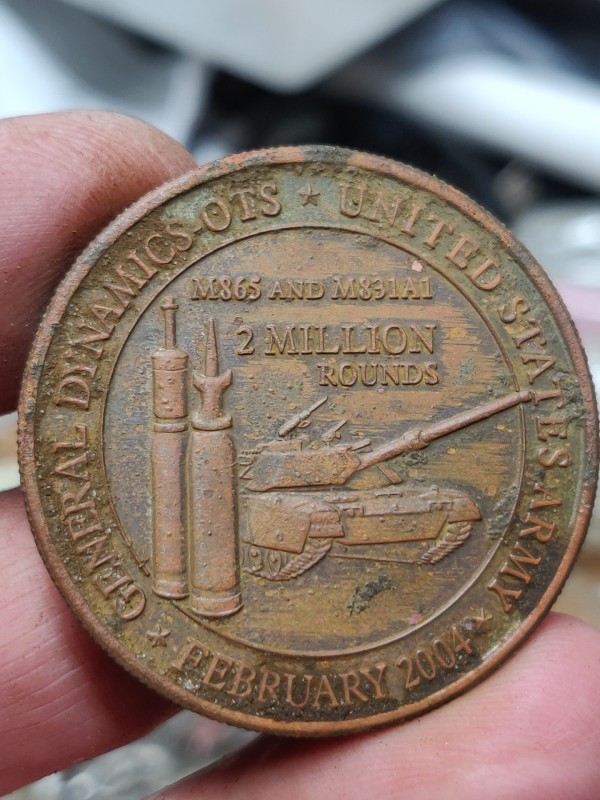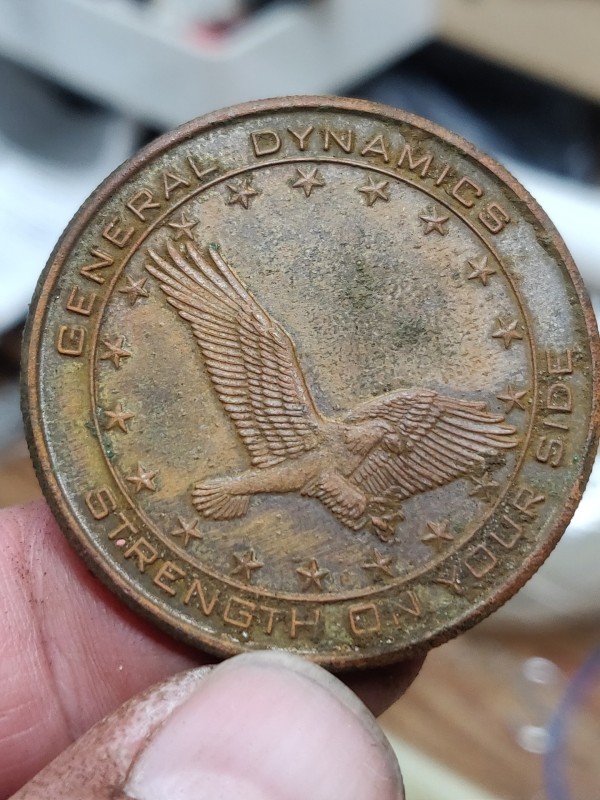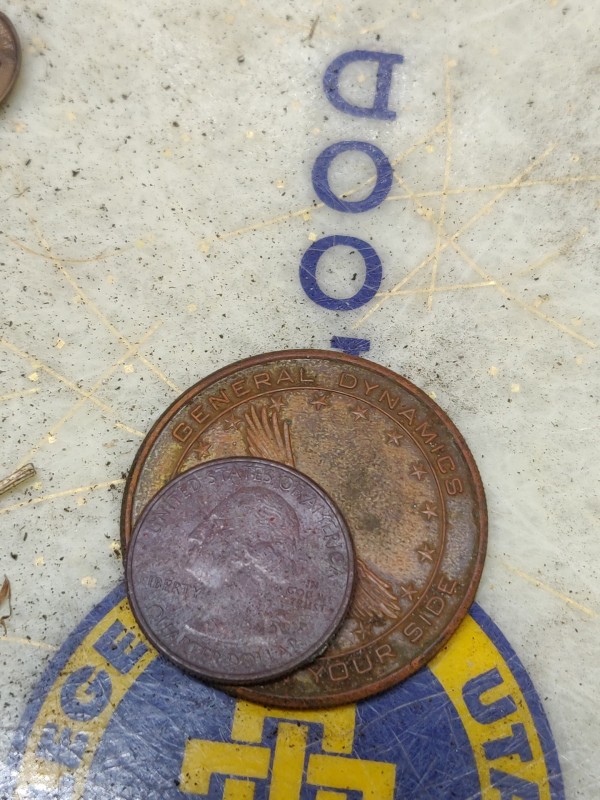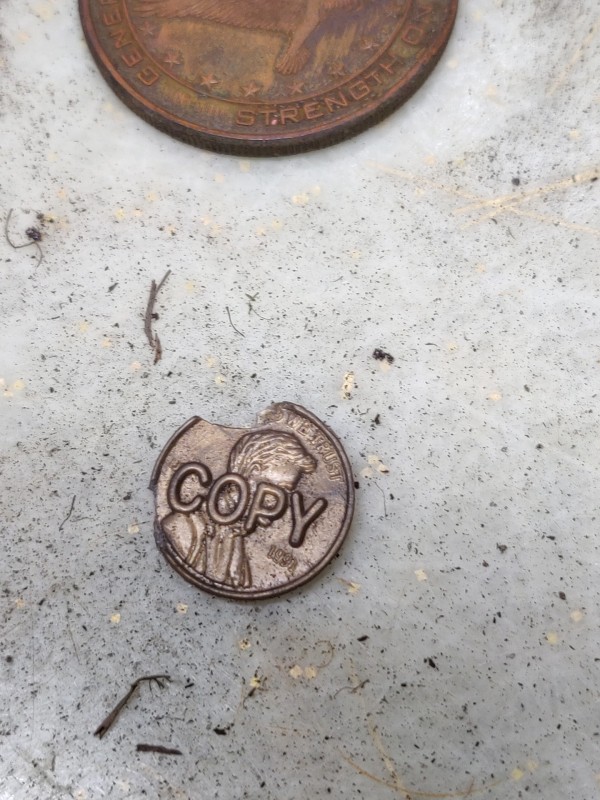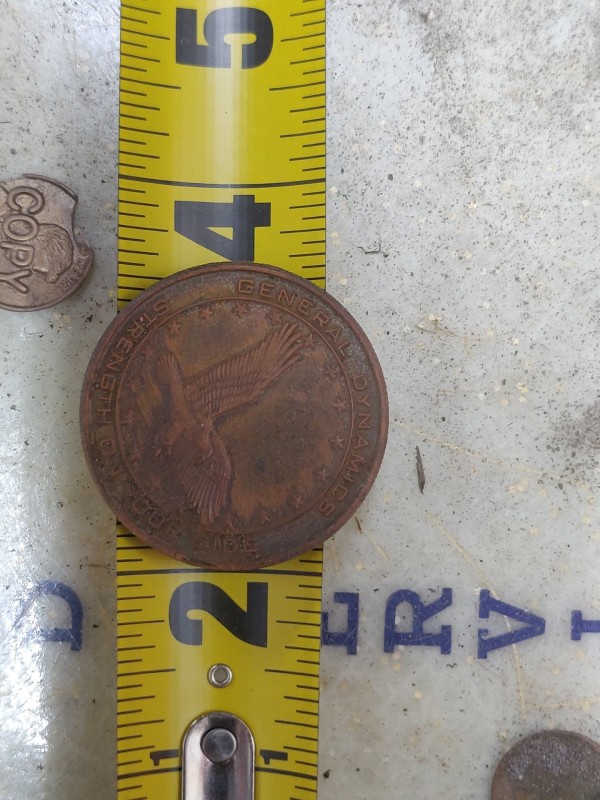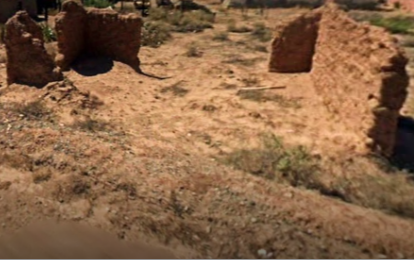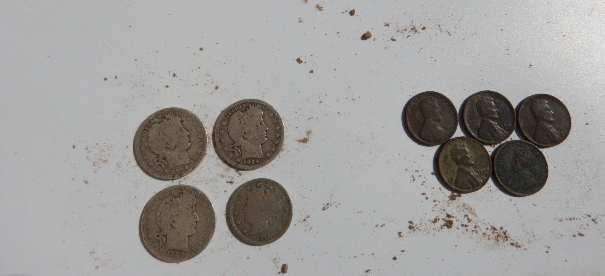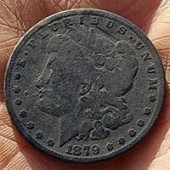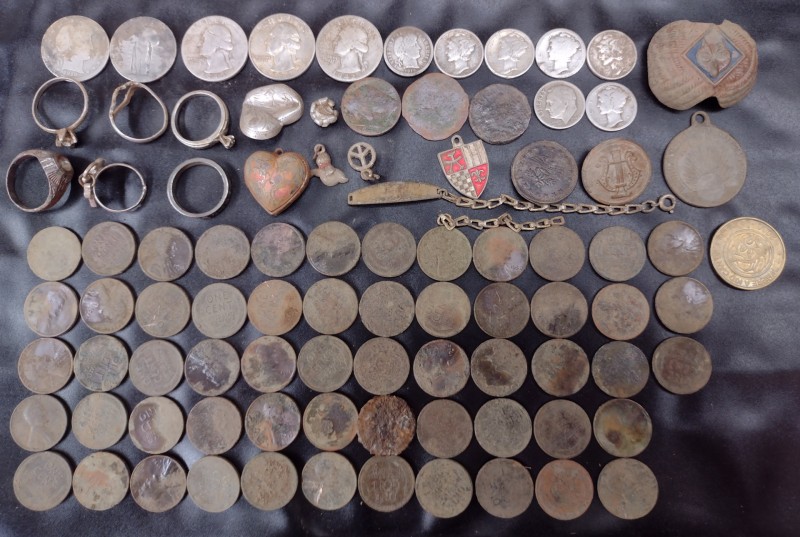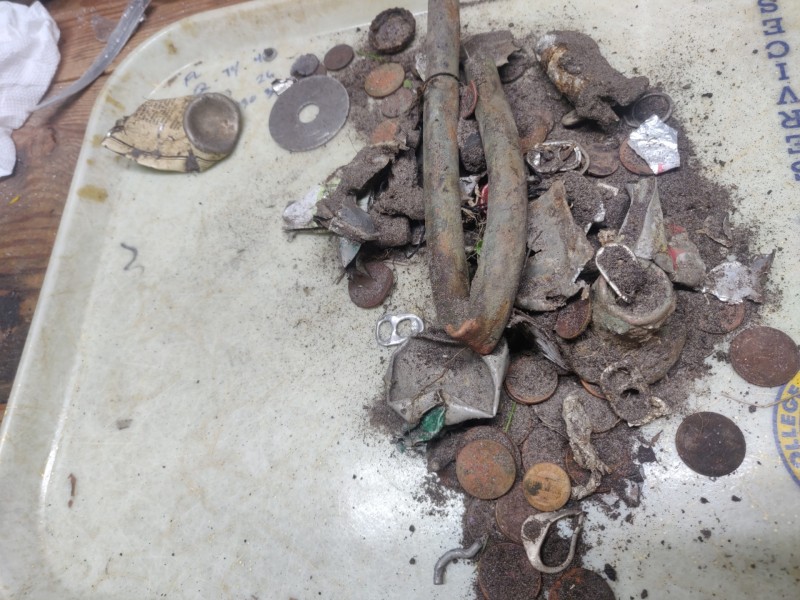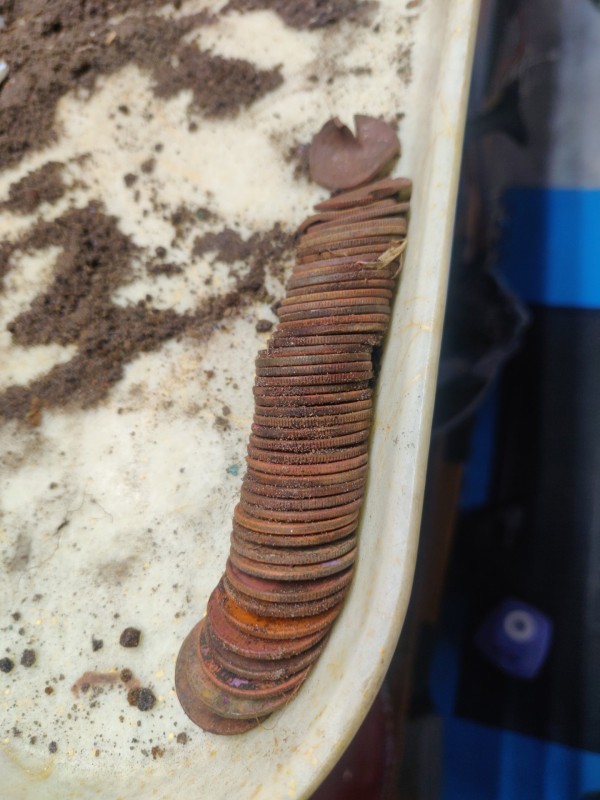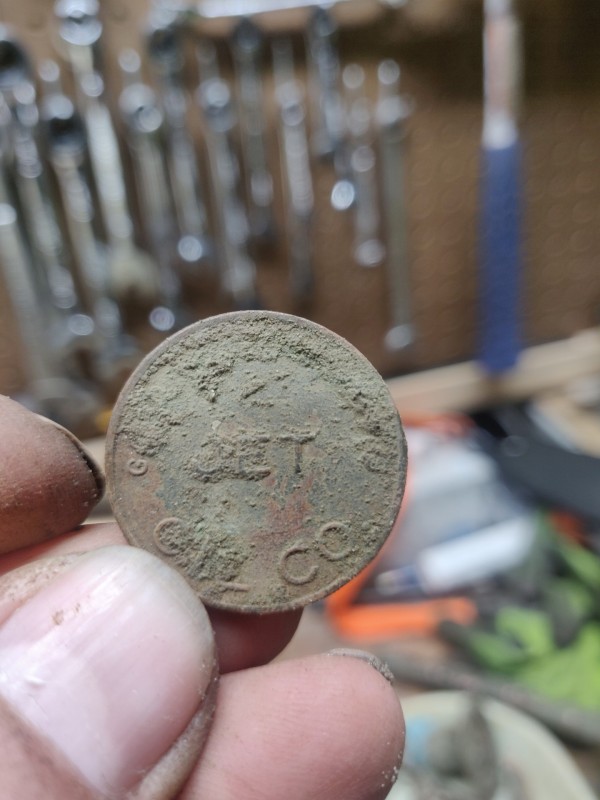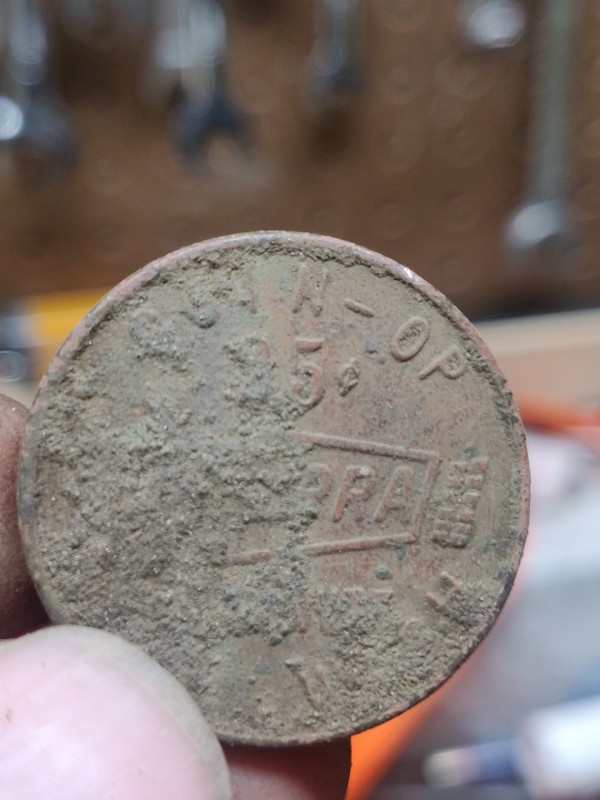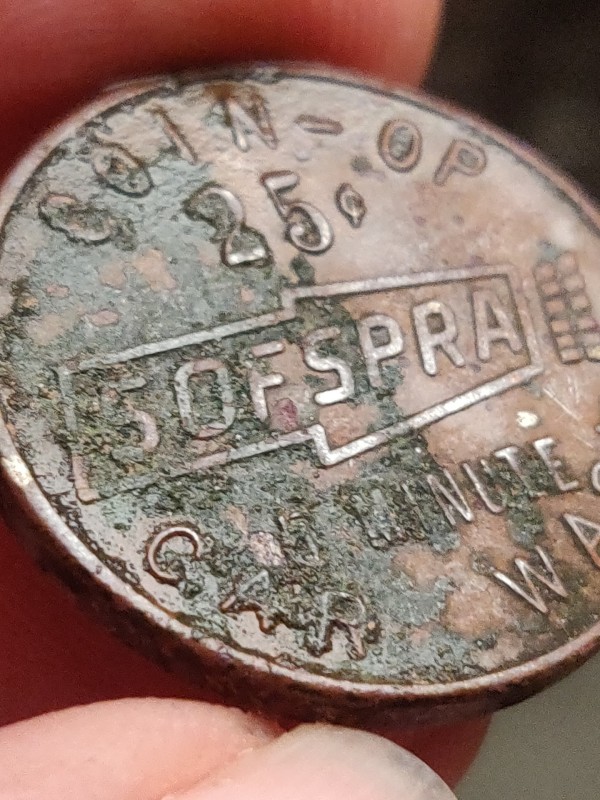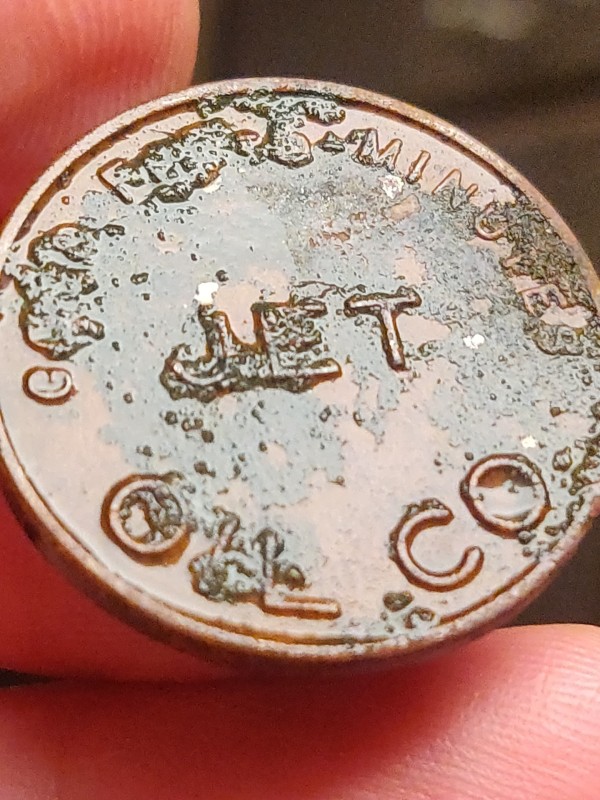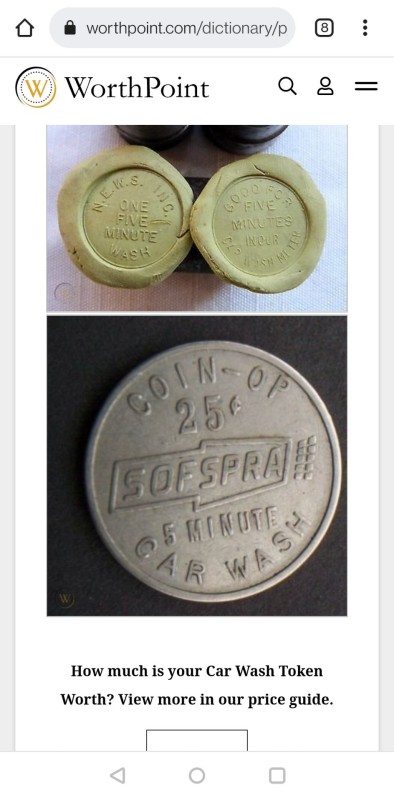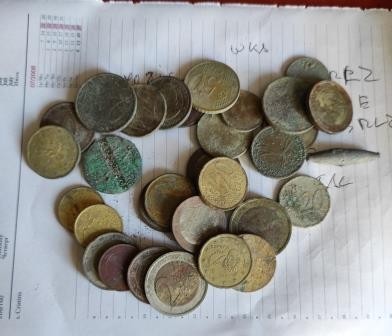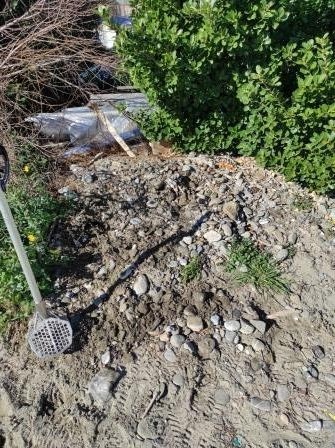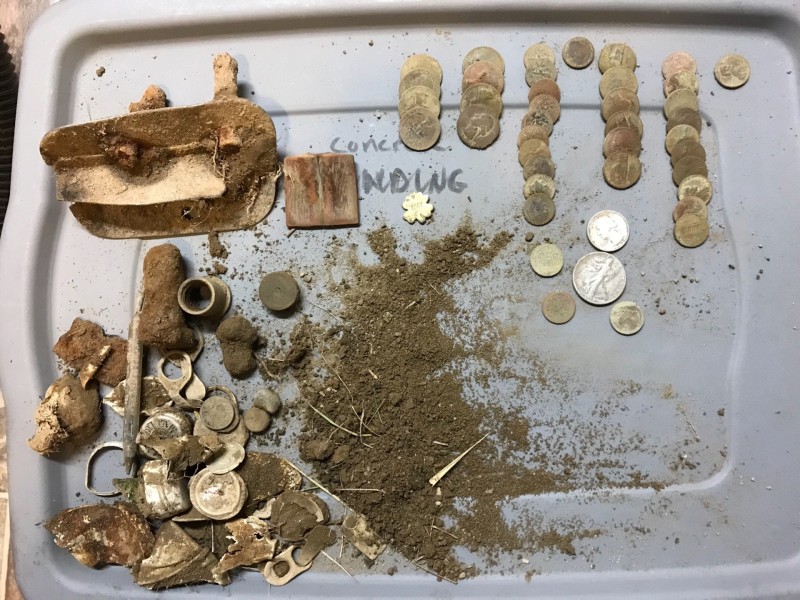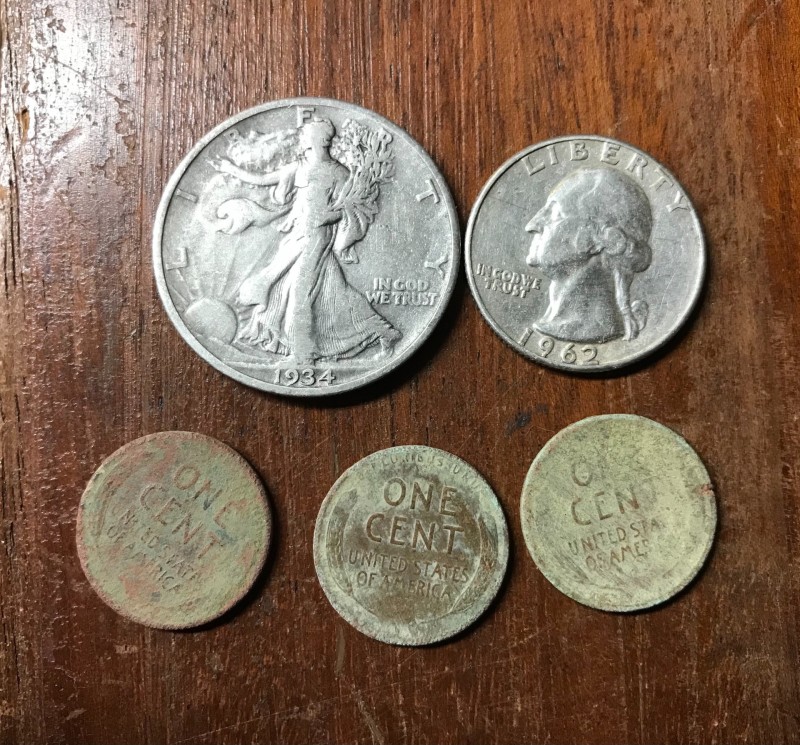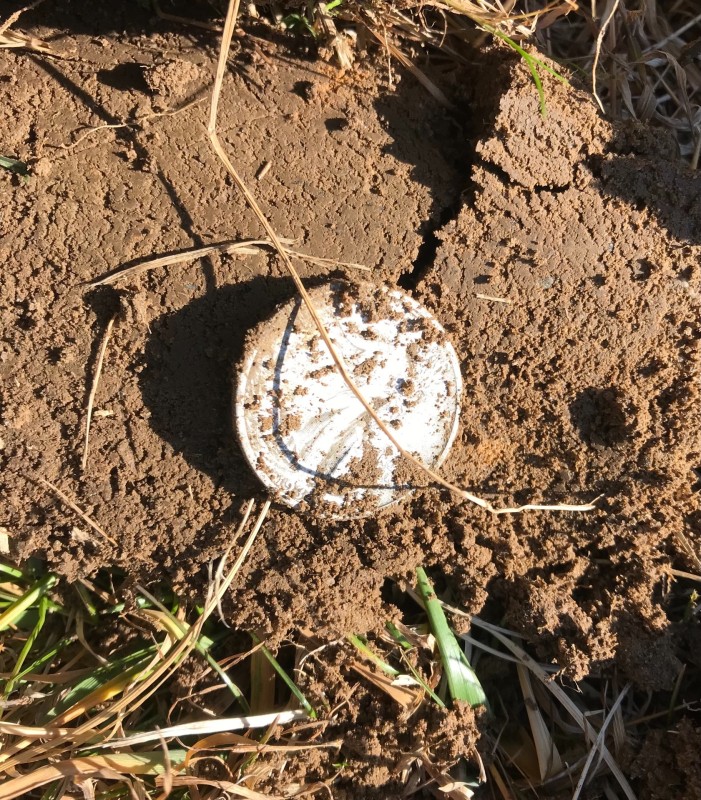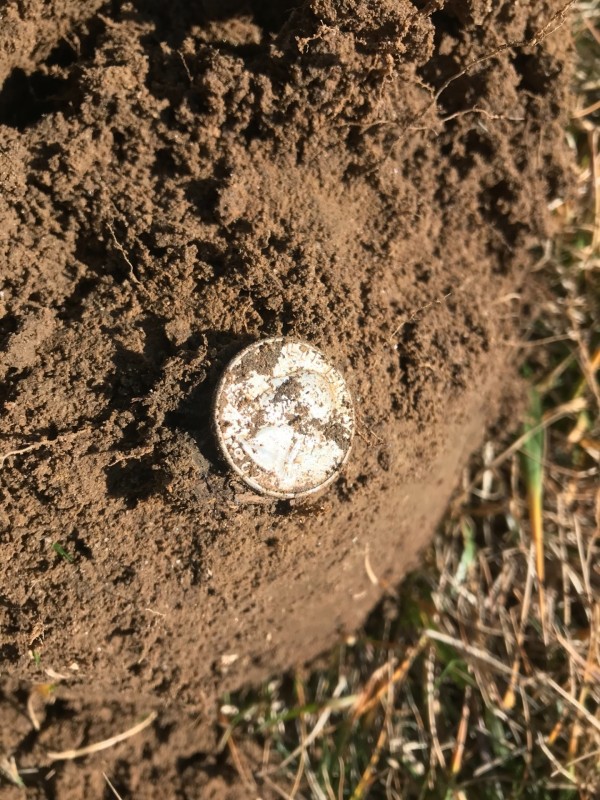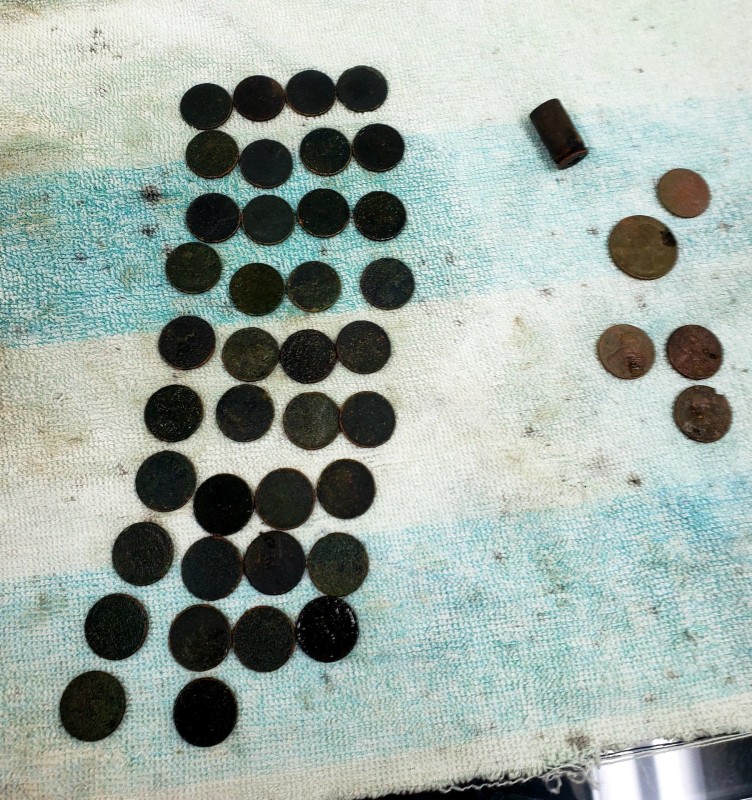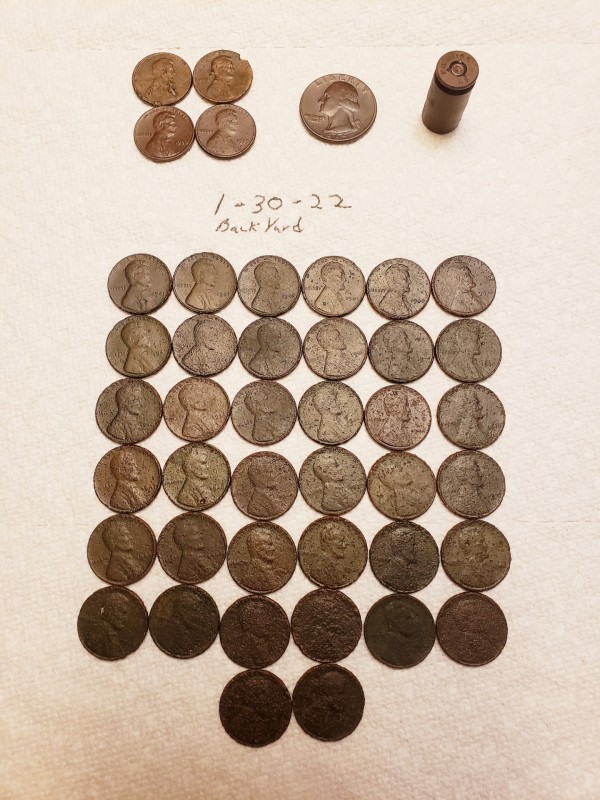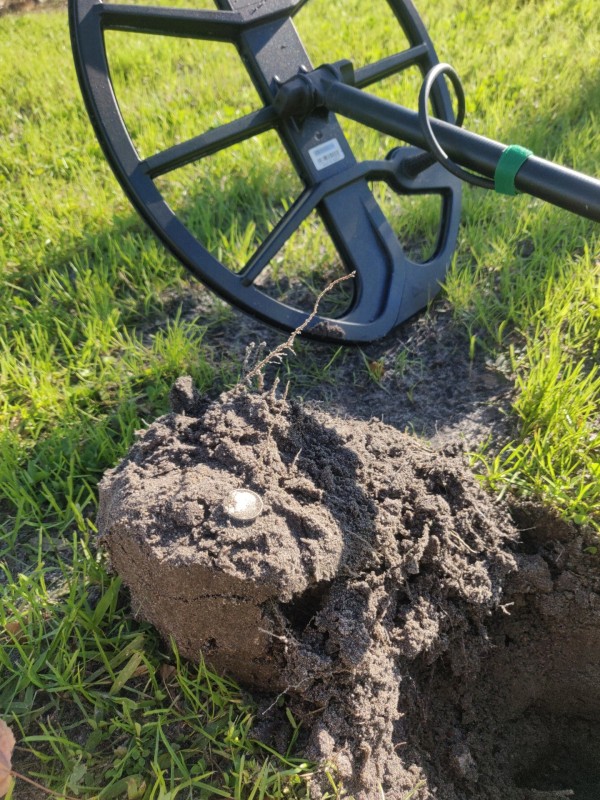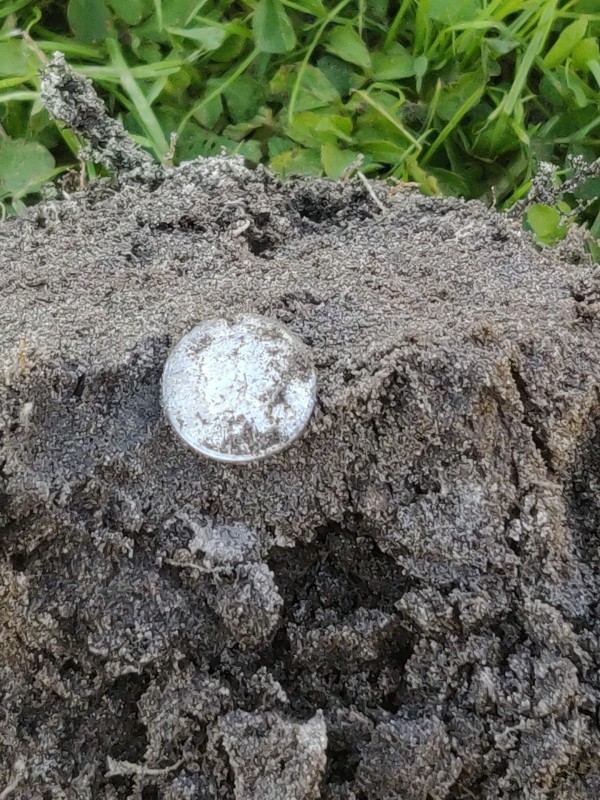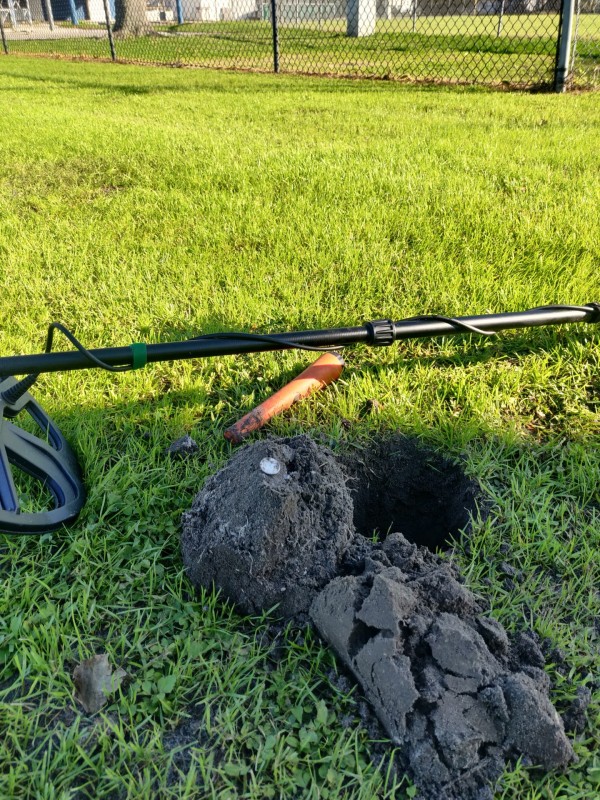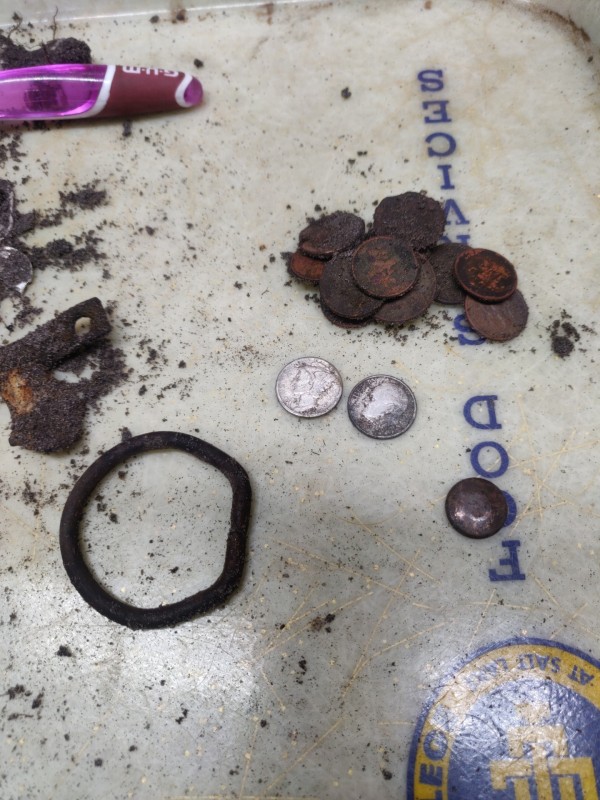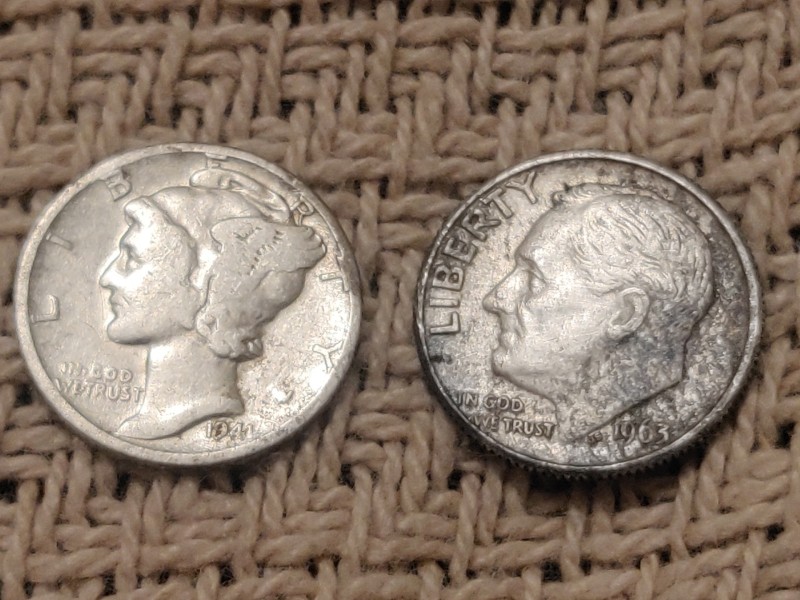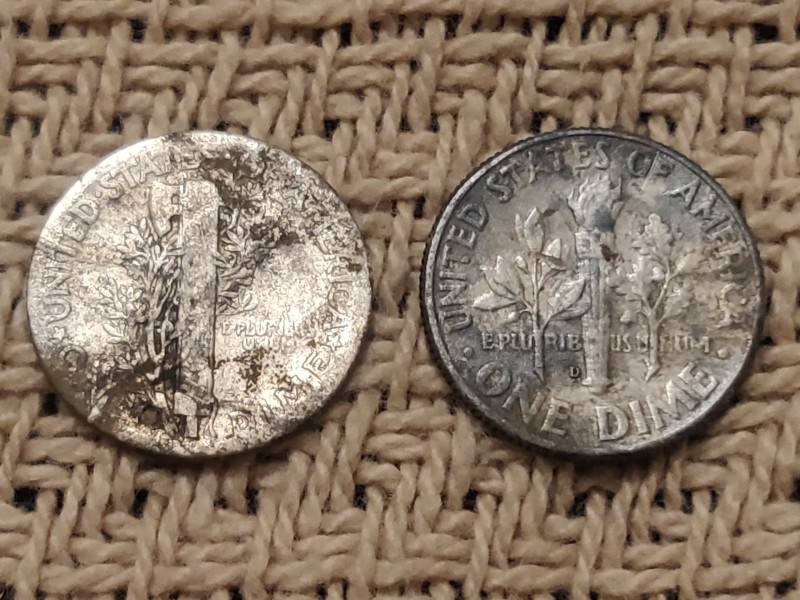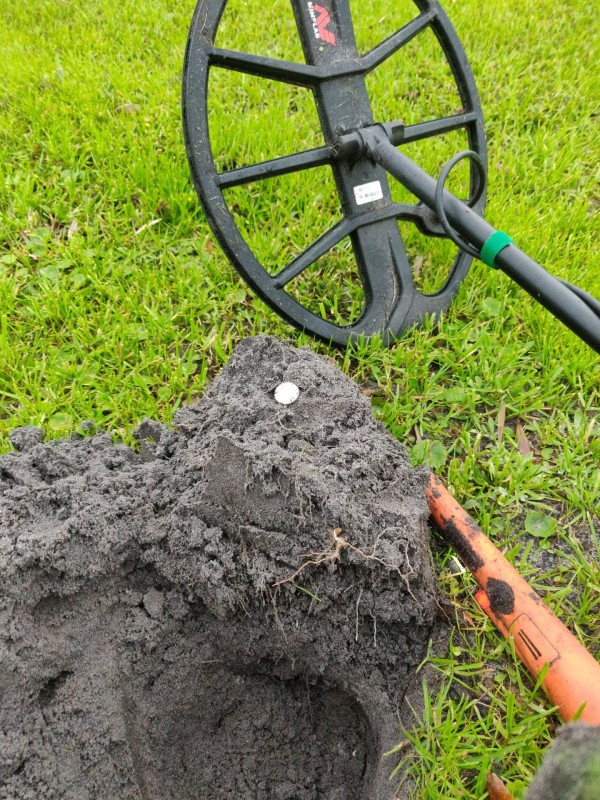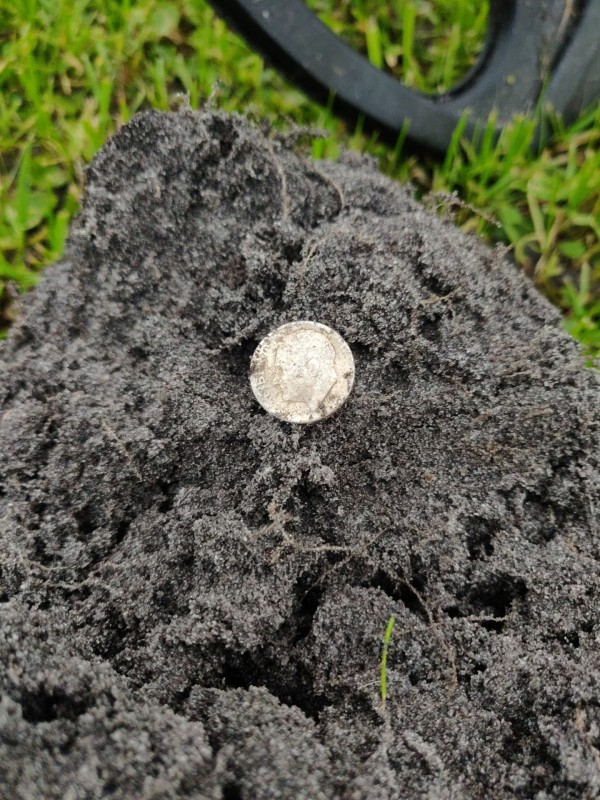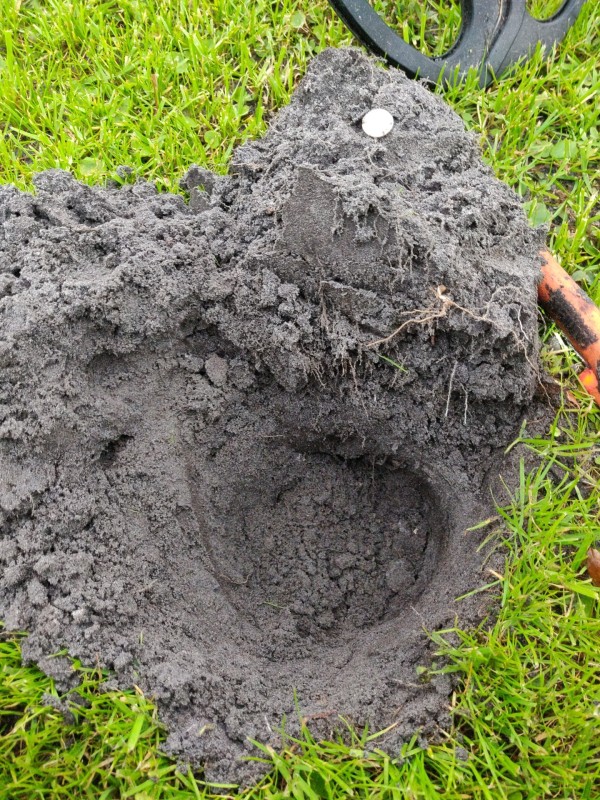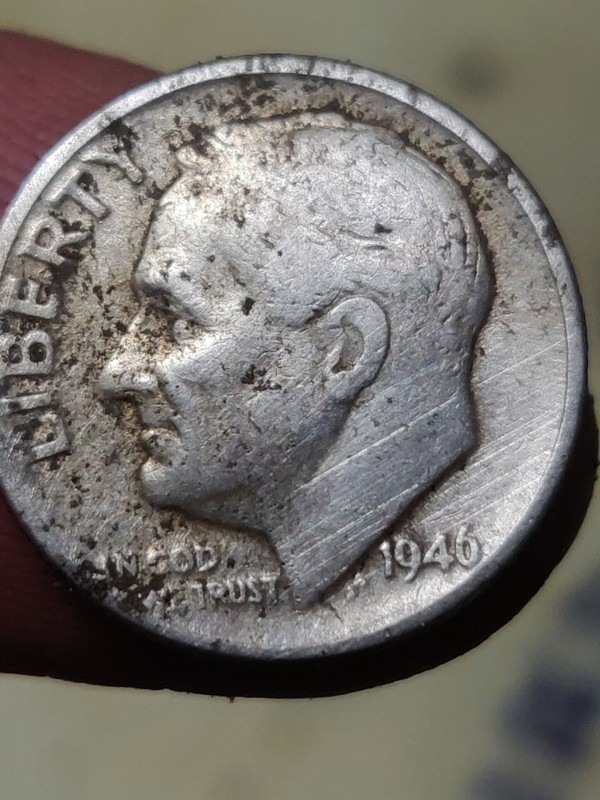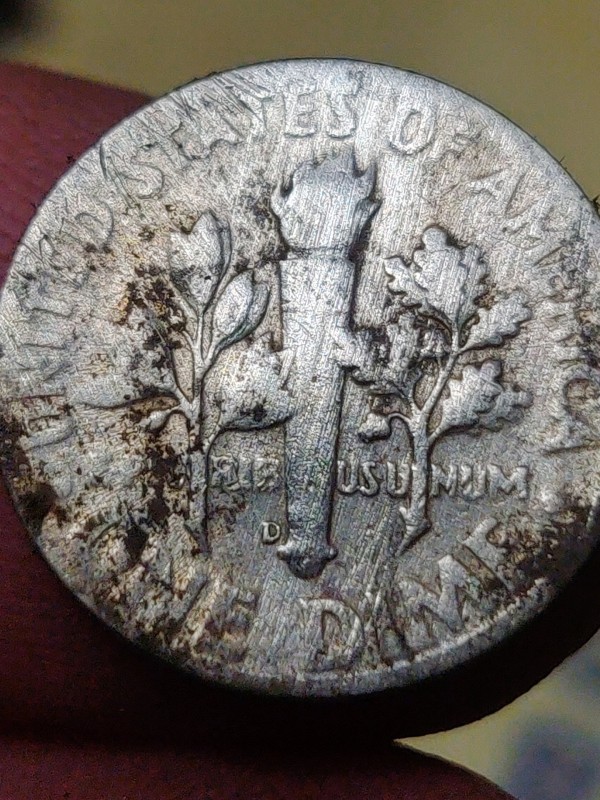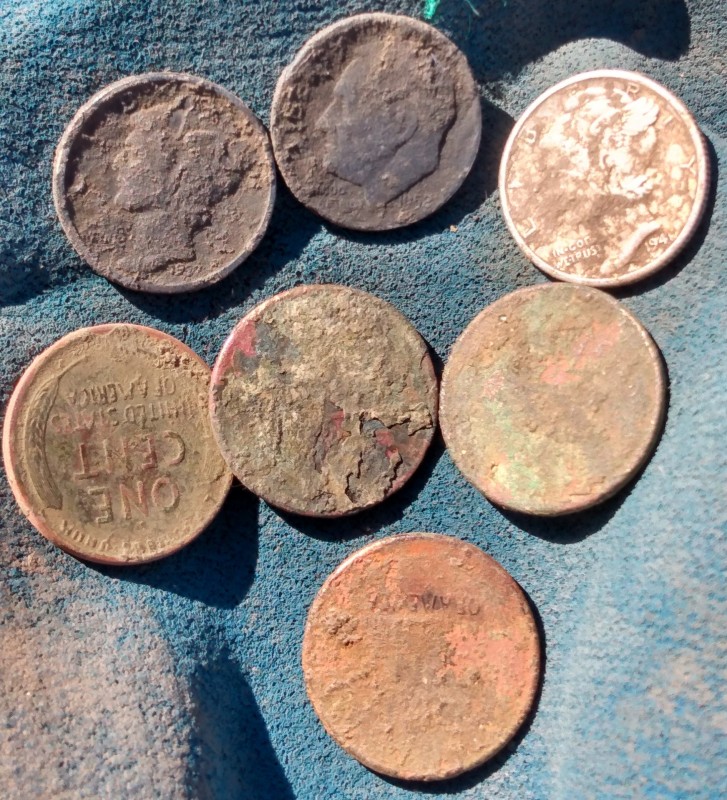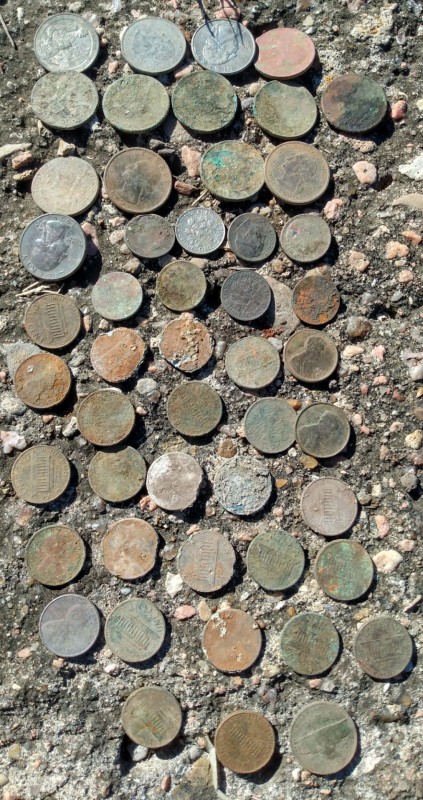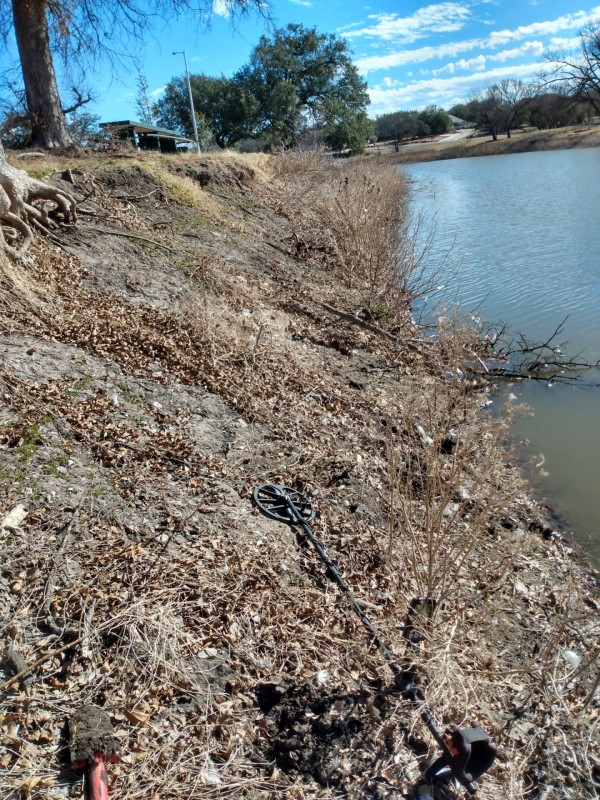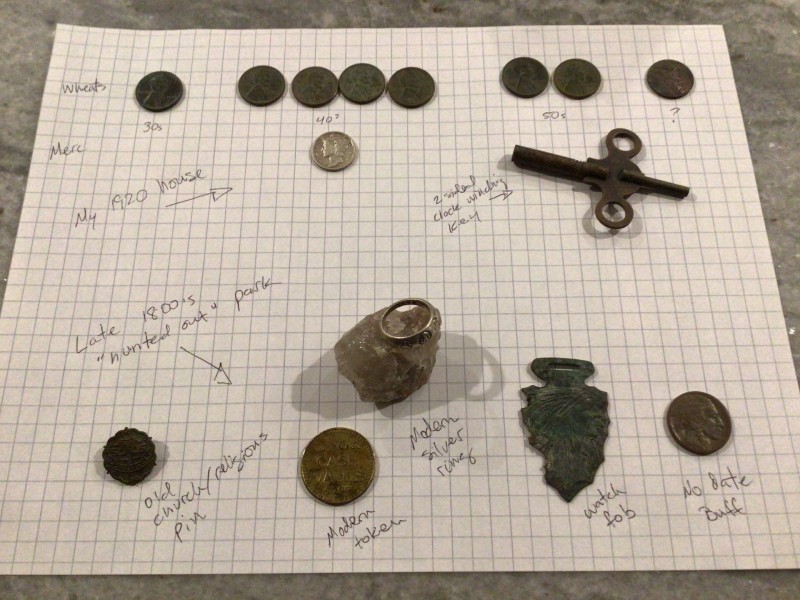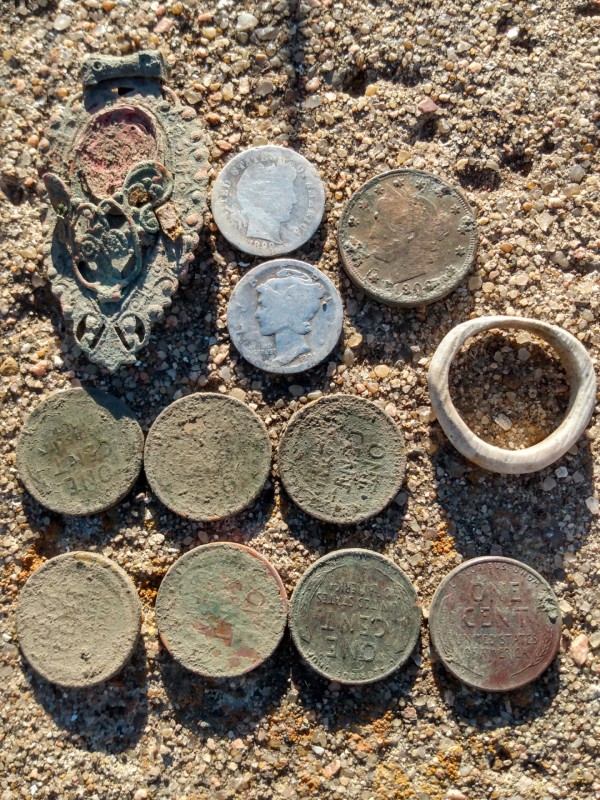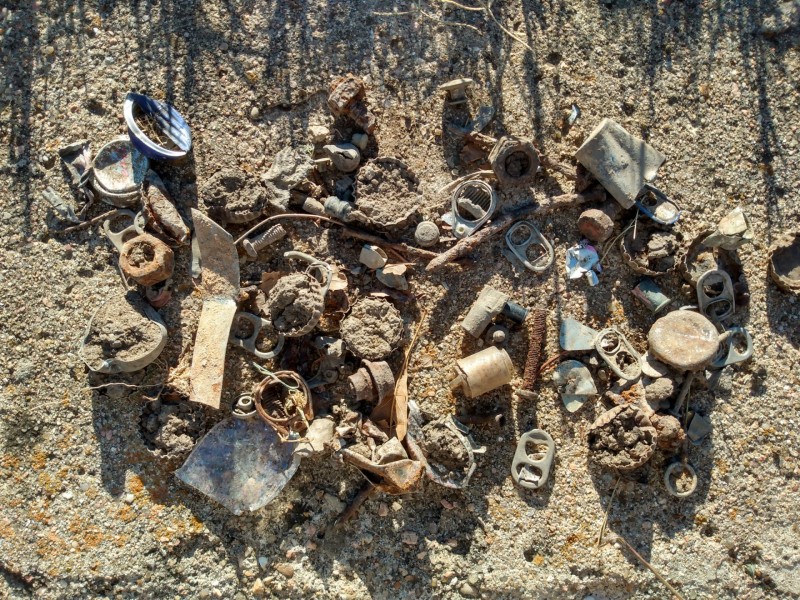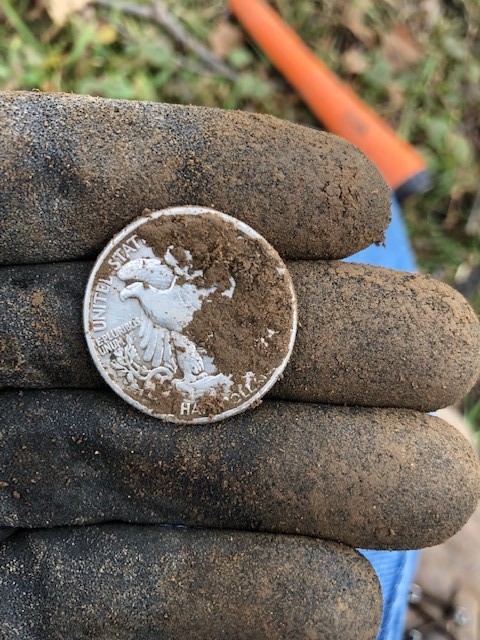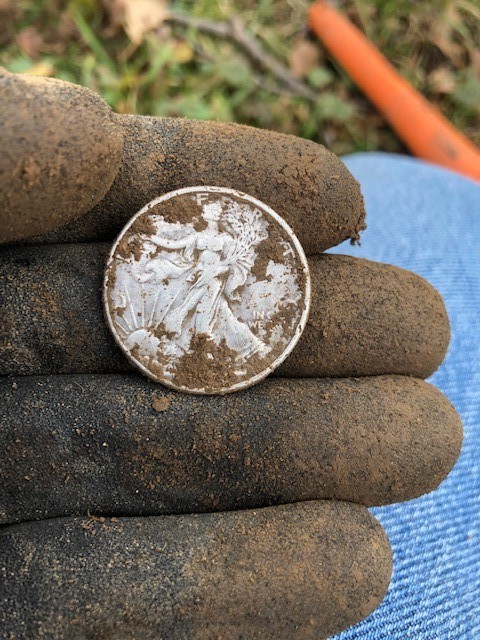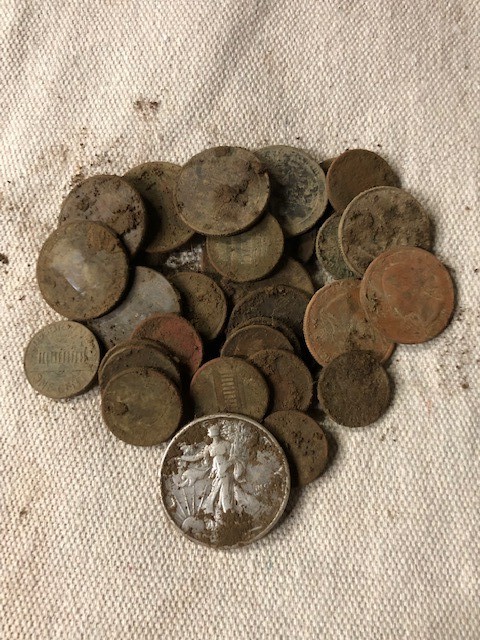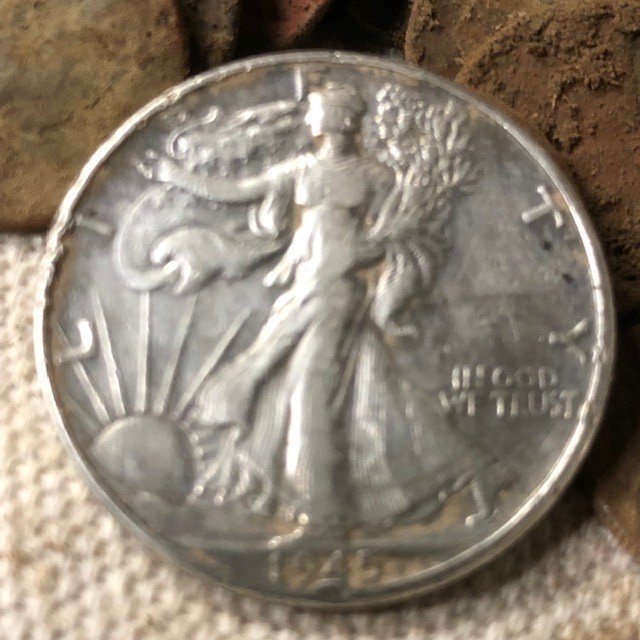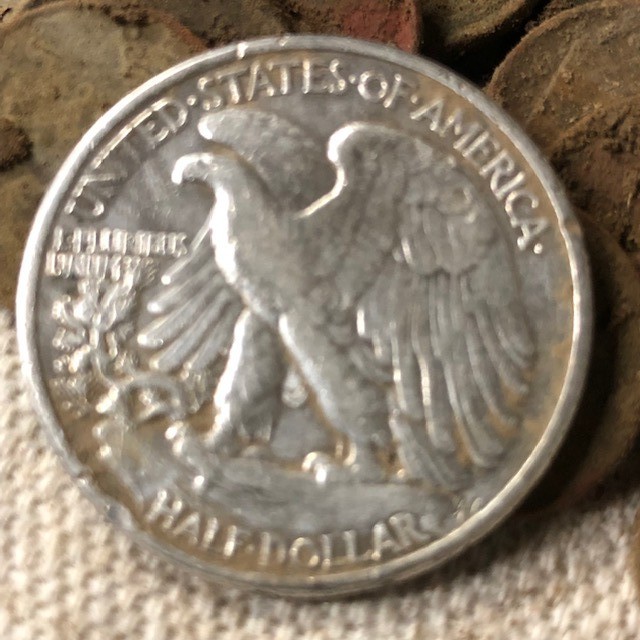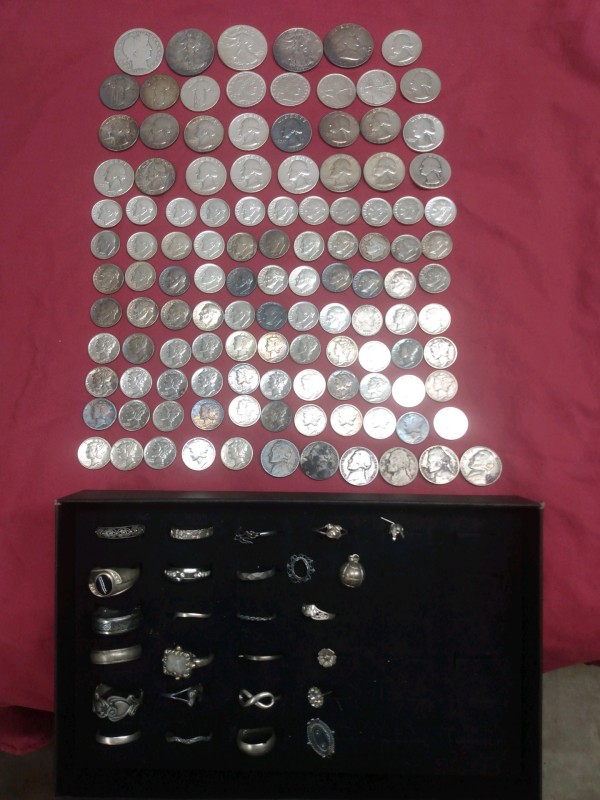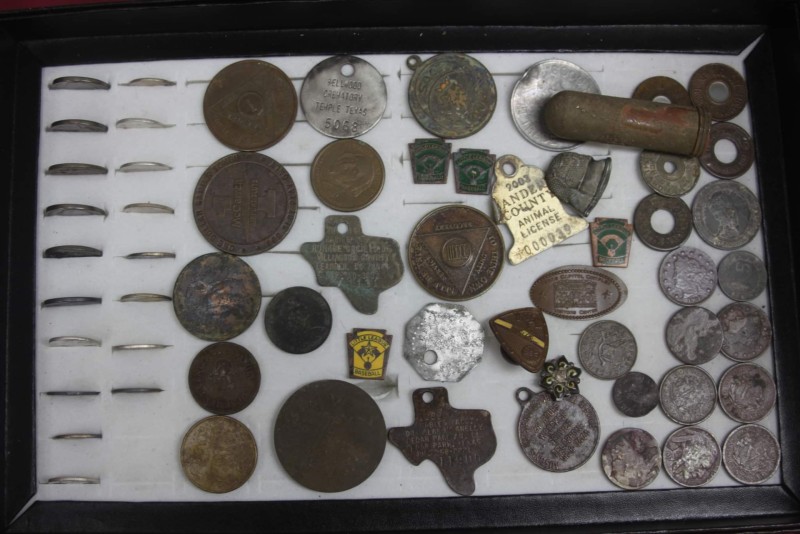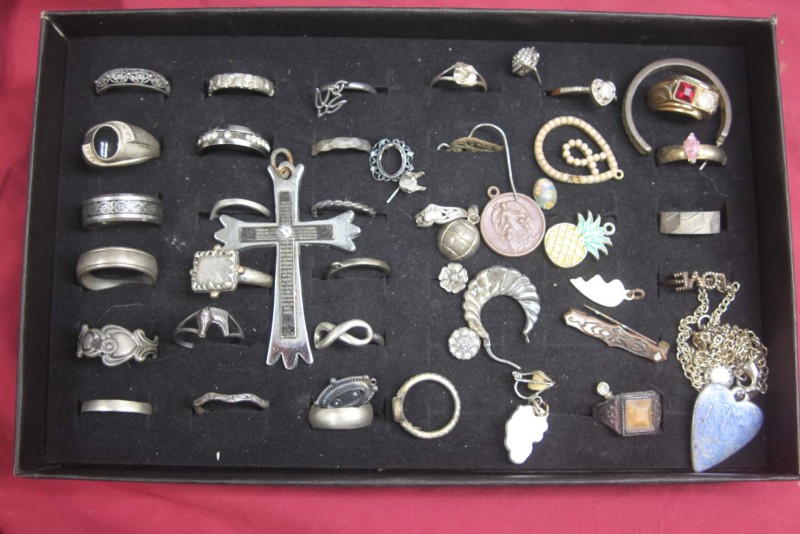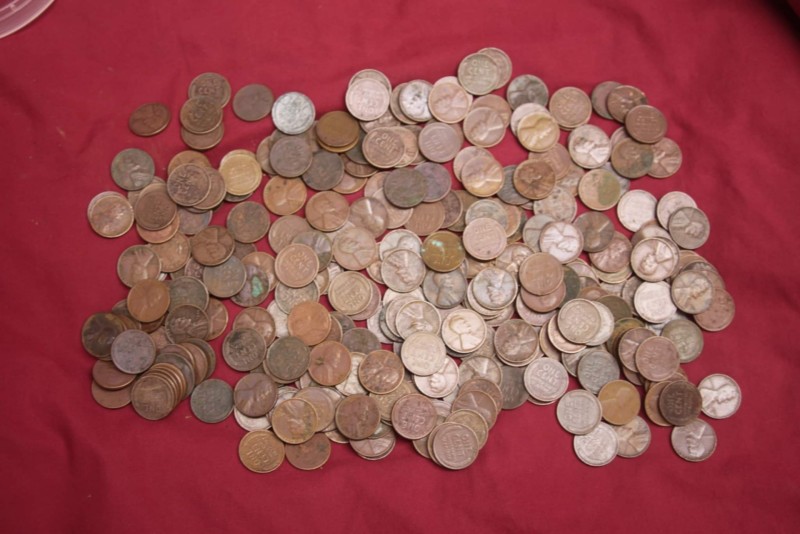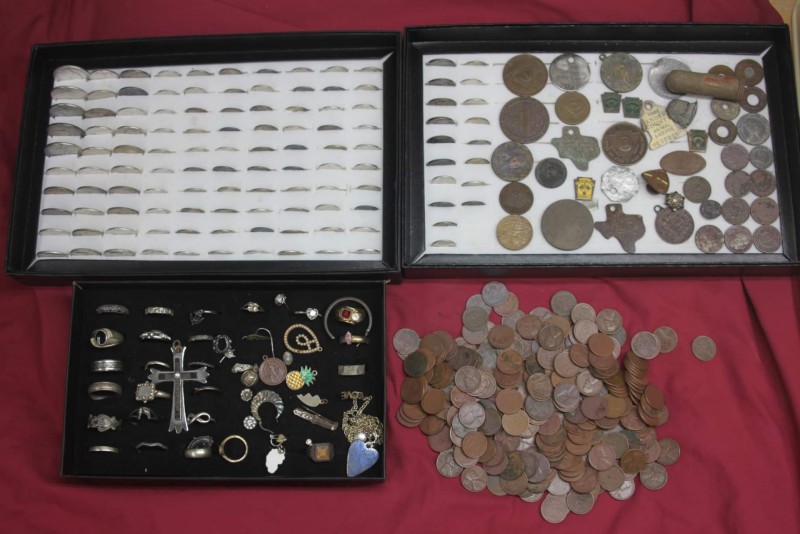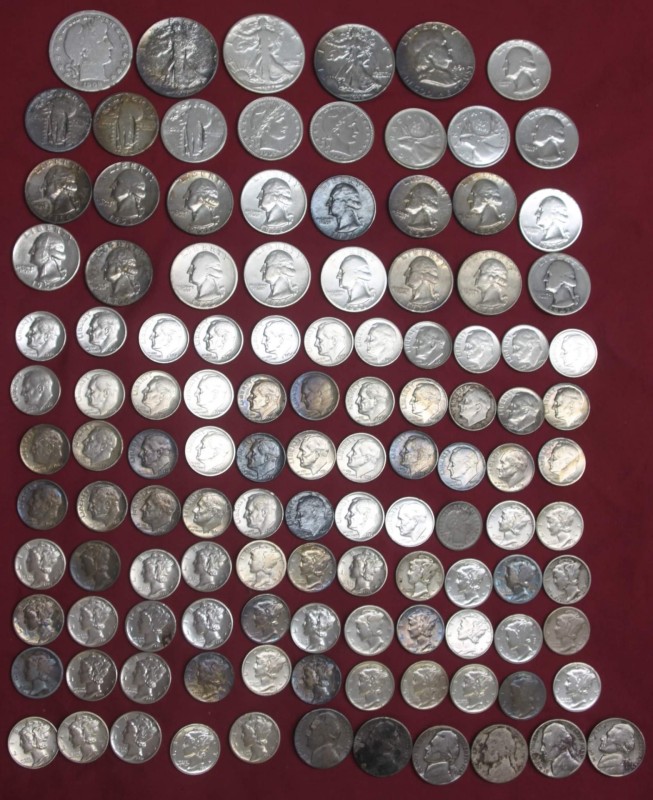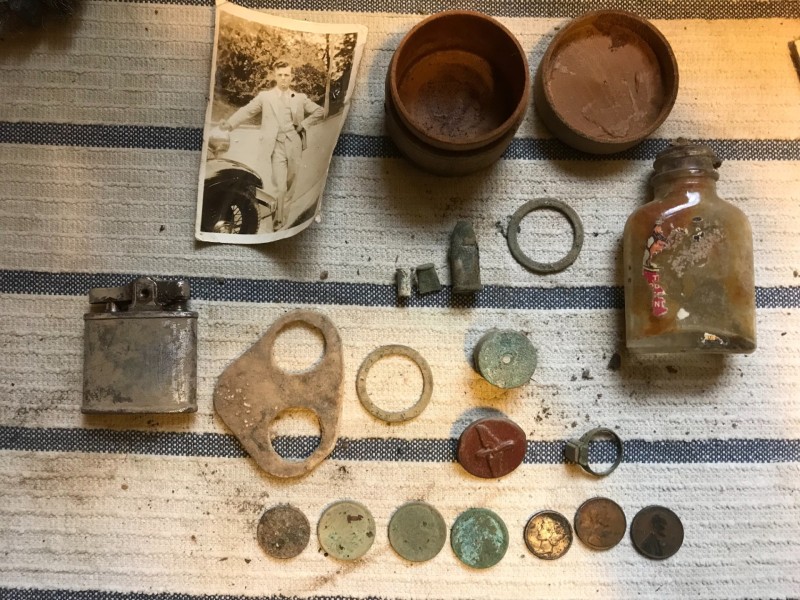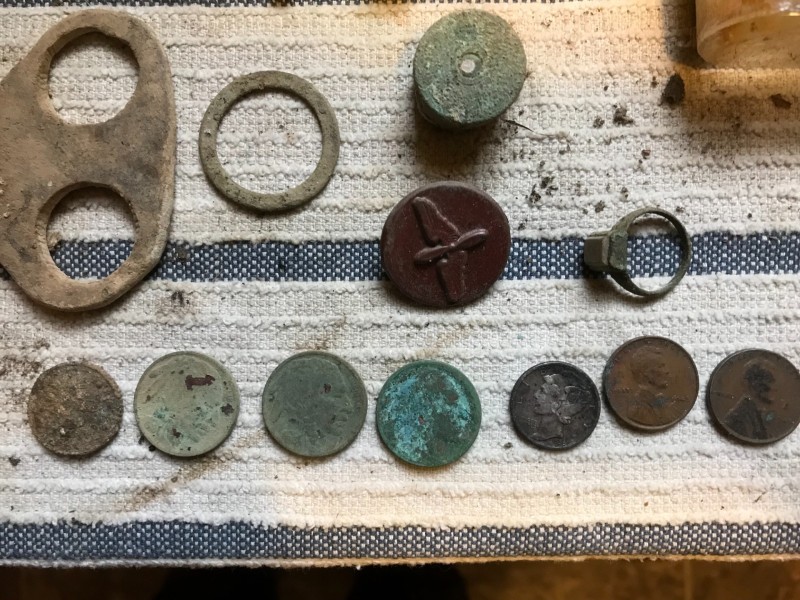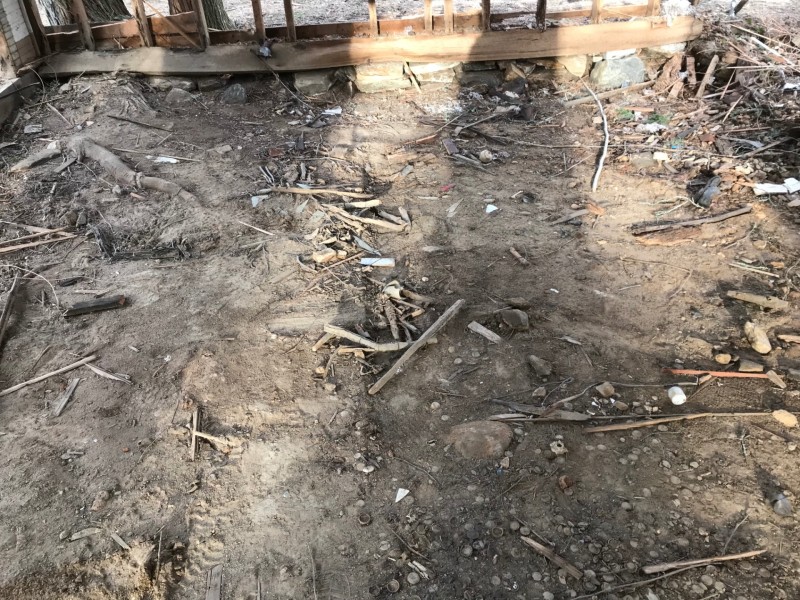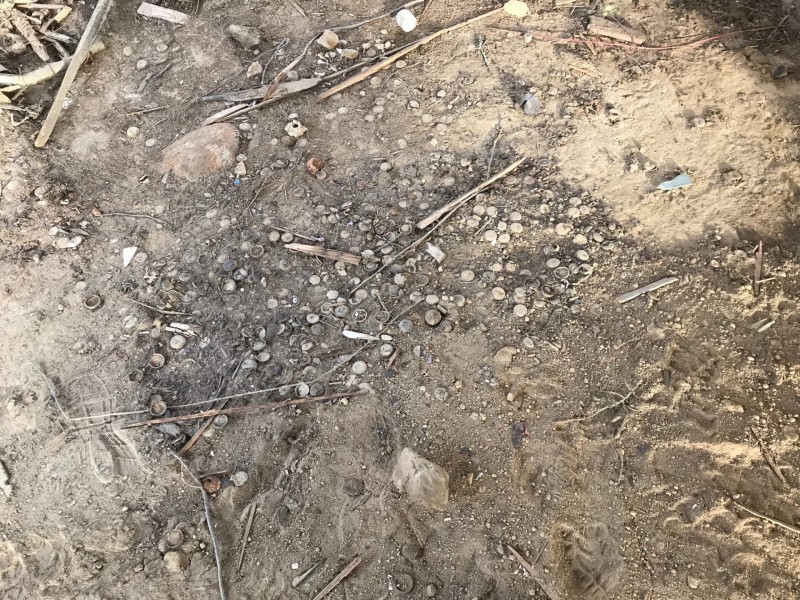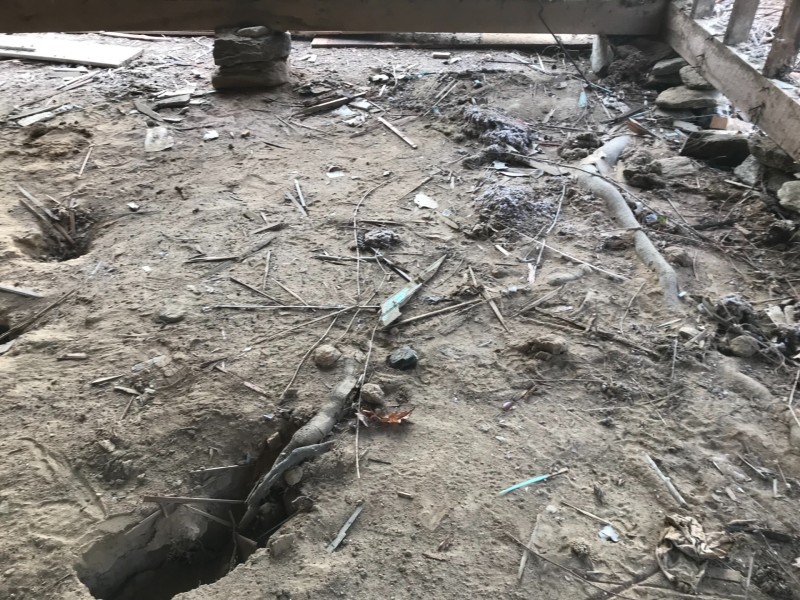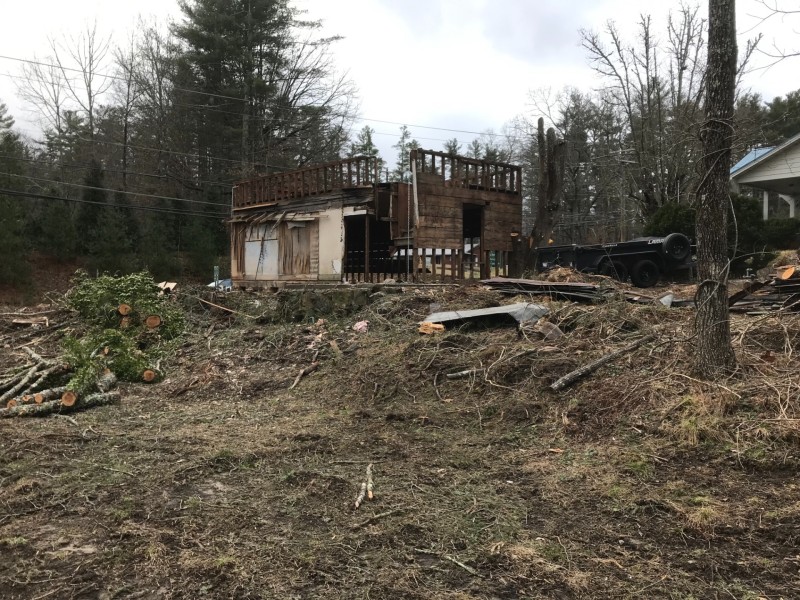Search the Community
Showing results for tags 'coin detecting'.
-
So, this is my final pond hunt before they refill the huge pond. It’s just too soggy to continue hunting, plus the bad targets far outweigh the good targets. The reeds and other bushy brush have completely taken over with just some sporadic areas left available to hunt. I did a 9-hour hunt and the GPX battery died on me. I don’t blame it. 😄 No gold this time, but a silver Washington quarter and 2 other possible silver items – a small ring and an ID bracelet. Lots of fishing and hunting finds as usual, plus the normal trash. This time around I had to leave a bunch of targets as my pouches were full, with no more room for anything else. It was fun while it lasted and certainly a missed opportunity, as the first ones out there would have been easily able to use discrimination to focus on coins, and gold if you don’t mind digging. Next week it’s off to some beach to get back to the sights and sounds of the beach. I did have one nice moment yesterday, when I looked up and saw an American Bald Eagle cruising around. He even made a final pass right over me. What a beautiful bird. 🦅 That made the hunt right there!
-
Only got out for about 1 hour today at old school. Out in the field there used be some kind of building or house. A lot of iron and got a few IH's and other coins in the past. I've hunted for a few years there and don't get anything there anymore. I took the Gold Kruzer over there today. I used Deep mode with 5x9.5 dd coil. I dug a couple bullets and lead. A piece of iron and little pieces of canning lids that are shredded all over the place there. Hardly worth posting but I did anyway. Sorry about that.
-
I switched things up this week and decided to hit that drained pond again. Actually, I really did not feel like driving to the beach when the pond is 15 minutes away. The tradeoff is that there are way more signals there than at the beach. But I’m not as muddy when I do a beach hunt. The pond makes quite a mess and definitely tests the old knees. I have a place I can park at a friend’s house and walk down a steep hill onto the pond. I was a bit worried I may get kicked out as the city workers were redoing a culvert right where I was heading down the hill. It’s kind of hard to be stealthy with a battery on your back and a big wire going to a long box. 😄 But they ignored me, so I went the other way. This time was no different than last time, with a lot of fishing and hunting related items. My first nice surprise of the day was a complete and functioning colonial shoe buckle. I’m thinking around the 1770’s as a guess. I spotted a couple marbles, so I grabbed them too. Lots and lots of junk, but as I entered a section that was littered with shell casings, this gold ring appeared. Apparently, I get one gold ring per visit. I can’t complain since I am limited to the seldom used section of the pond. Most finds from others were found nearer the population center of the pond. This ring is old and comes with what we think is a very sad story. It’s a women’s wedding band, very tiny in size and has some somber engravings. 3 Initials in old English script writing on the outside with apparently a birth and death engraving on the inside. 1877-1915. That would make the person 38 years old and probably her husband. It is possibly not from the US originally, as we seldom engrave on the outside of the ring (I think). We even wondered if he died in WW1 and then she moved to the US. WW1 started in 1914, so it’s possible. I’m happy it found me, and I have only good feelings from it, so it will go into my collection, along with some special feelings left on that one. I’m not sure if I’ll get back there anytime soon, so it may be my last hunt at the pond. They are pushing hard to finish the project (now going on 2 years), and they should be out of there soon. Great to get out, really nice that the rain held off, and I didn’t get kicked out…..what more could you ask for?😊
-
Tuesday evening I took the deus out to practice in the yard and hit some fringe areas. I had probably had my nox in these areas but only maybe once or twice. The first two good finds were copper memorials in different spots. There’s a power pole in the yard and a while back I hit a wheatie maybe ten feet from the pole with the deus. So after hitting those two memorials I headed over near the pole to see if I might find another wheatie. This time I went on the opposite side of the pole from where I had found that wheatie. I got a strong 88 tid and thought that maybe it was a deep smashed beer can because I had dug a few of those not too far away with the nox a good while back. I dug about five inches down and see a small spill of a few pennies. I get those out and stick my pinpointer back in there and it goes off again. To make a long story short, I kept doong this over and over with the pinpointer and then the deus until I had 61 memorials! It probably took me a good 45 minutes. I checked the date on a few of them as they came out of the hole and they were 60s and early 70s. So in all I got 63 memorials ranging from 1959 to 1975. Wednesday night it rained but this evening it was nice and sunny. So I decided to hit an area over by my shed. In the pic it’s on the opposite side of the shed. I dug a couple of junk targets and then I got a nice 91-93. From about six inches down out comes a 1947 rosie! I have searched and searched for silver in my yard. The only silvers anywhere close by have come from an old spring which is about 120 yards away. This rosie puts me at 14 for the year.
-
I've been lucky the past couple years with January and February weather nice enough to detect. Not this year, though. We didn't have much snow those months, but as soon as the rain stopped the ground refroze. March has been much nicer and I've gotten out half a dozen times. The first several hunts were either for trying different detectors or just cleaning up my "Wheatfield" site (muni park) that produced well last year. My standard New Year's resolution is to find new potentially producing sites so finally this week I got to one of those. It didn't disappoint. This is another public park and (as always) I assumed it had been hit hard, like most of the other parks I've detected. First thing out of the box I noticed that I was picking up ground noise. Typically around here I ground balance the ML Equinox (11" coil, Park 1) around 30 plus or minus 5. After hearing the ground noise I ran an auto GB sequence and it settled at ~7! No problem, though, nice and quiet. I settled in on a gain of 23 and left my other favorite settings (5 custom tones, Recovery Speed = 4, Iron Bias F2 = 0) alone. I had viewed HistoricAerials' photos and had a decent idea of what the park looked like back in the 50's and 60's (oldest photo there was from 1955). That helped me decide what ground may have been minimally reworked since those last days of dropping silver coins. I did my usual first hunt surveying -- not trying to mow every inch but wandering around looking for sweetspots. After a few modern coins, about 30 minutes in I got my first oldie -- a Wheat cent. Already I knew I'd found a good detecting site. Within another 30 minutes I get Wheatie #2, and within the next hour a Buffalo nickel. These early finds were in an area about 10 m by 40 m. I recalled from the aerial photos that a current sports field was present at least back to 1962 and by comparing the old photos to newer ones it appeared things hadn't changed much in that part of the park so I wandered over there. Bonus: one building obviously had a concession stand. The ground around it had been covered with crushed stone so people wouldn't be walking in mud after rains. I immediately got a copper Memorial cent about 2 inches deep. Again surveying, maybe 10 meters away I received a good but strong (i.e. likely shallow) 5 cent dTID of 12-13 and an inch or so down, out popped a silver Warnick! Here's a photo of the loot: I'll explain the bottom row in a bit (only the central Buffie was found in this hunt). The two Wheaties were dated 1941 and 1937 (no mintmarks). The Warnick is the most common date+mm -- 1943-P. What surprised me about it, besides how shallow it was, is that its color is consistent with circulated (but never spending time in the ground) examples of which I have at least 150 in my collection. It has a not particularly attractive gray cast which made them easier to spot and remove from circulation back in the late 60's and early 70's when silver started going up in value. All others I've pulled from the ground have been 'cleaned' by some ground chemical (acid, possibly) and look much whiter, similar in color to 90% silver coins. Its depth is reflective of the material of the ground -- crushed stone. In my area most overburden is from decayed vegetation (especially grass clippings). As long as they don't put down thick layers of fresh stone the targets aren't going to be very deep in that area around the sports fields. Finally, the last row. The central coin (view enhanced by coating with olive oil) is the dateless one I found in this hunt. On the left is a 1916-D I found late last year, also with an olive oil coating that is now evaporated somewhat. The coin on the right is dateless and not from the ground. Note the relative wear to the buffalo's back and head as well as the wear to the 'United States of America' across the top and 'E PLURIBUS UNUM'. The two on the left show similar wear, and in some ways (but not all), more wear than the undug example. But here's the big difference. Look at the lower slice, below the buffalo's hooves. The two outside coins have a recessed 'field' where the words 'FIVE CENTS' as well as the mintmark ('D' for Denver in both cases -- difficult to see in this photo) are protected from excessive wear. The first coins minted in 1913 didn't have that recessed area but rather the 'FIVE CENTS' and mintmarks stood out, away from much of the coin's detail. It was quickly realized that typical wear from circulation would obliterate these letters so the design was changed and the second type (exhitibed by the two outside coins here) was introduced late April 1913 and continued through the entire series, ending in 1938. Thus even though the nickel I found in this hunt no longer has a date, I know it's an early 1913. (I don't know which mint, though.) About 30 million of each type were minted in Philadelphia that year making that version very common. Both Denver mint (5.3 million with 'raised ground' & 4.2 million without) and San Francisco mint (2.1 million and 1.2 million respectively) are scarce and carry a premium value in decent condition (definitely not like mine!) with both type 2 issues from these branch mints carrying considerable numismatic value, especially the 'S' mintmarked Type 2. Even if I knew the mintmark on mine were an 'S', it would be worthless in this terrible condition. But it's fun to dream. 😁 I also found $3.90 face value of modern coins in this 3.5 hour hunt. Bottom line is that this park hasn't been hit that hard by detectors and there are more goodies awaiting!
-
Has anyone ever seen a 1909 S VDB Lincoln Head Cent? Held one in your hand? Found one in your pocket change? Finding one like that used to be on my bucket list (in the 6th grade) One day it actually happened! Walking home from school with two of my numismatists friends, I casually reached into my pants pocket to check my small accumulation of change for the day, to see if I had acquired any collectible coins. In those days, it was still possible to find an occasional valuable penny or two in circulation. Lo and behold, there it was! A 1909 "S" Victor D. Brenner Lincoln Head Penny! I was shocked and elated, and showed it to my friends who were suitably impressed and envious (for about half a second), until reality set in with the realization of one minor detail. We all knew where it came from and we knew it wasn't mine! I took another step, then turned around and started walking back to the candy store we had just left, to return the coin to kindly Mr. Jameson who had mistakenly given it to me in change. We knew he would be heart broken for the loss of his most valuable coin and we felt at least partially to blame for the costly mistake he had made. After all, Mr. Jameson was the only person in our small town who owned a metal detector and we pestered him almost daily to see, not only this special coin, but any other coins that he had found while detecting or had received in change at the store. Because of our persistent nagging, he had placed the 1909 penny where he could easily reach it in his coin tray and show it to us. But it just so happened that he had placed it along with some other collectible Lincoln pennies in the tray adjacent to the regular pennies he routinely gave back in change. When we arrived back at the store, several students were standing around whispering to each other. Someone said, "You won't believe what happened. Mr. Jameson lost his 1909 penny!" I went up to the counter and stood silently in front of the tearful Mr. Jameson waiting for him to notice me. He continued to frantically sift through the pennies in the cash register drawer searching for his prized possession. To get his attention, I noisily lifted the lid on a candy jar sitting on the counter and took out a single piece of candy. I held the candy in my hand and laid the missing penny on the counter. Finally, Mr. Jameson paused and looked down at me standing there; looked at the candy, then picked up the penny. The surprised look on his face and the gratitude in his eyes was easily worth as much to me as the penny was to him. He rewarded me with free candy the rest of the school year, which I shared with my friends. Mr. Jameson continued to generously share his passion for detecting and coin collecting with us by letting us see and handle all of his rare pennies which included a 1914 D Lincoln cent and several others. However, he did wisely remove them far away from the other pennies in his change drawer and he never lost another coin as far as I know. I have occasionally thought about the incident over the years and the irony of once having bought a 1 cent piece of candy with a 1 cent piece that would now be worth a few hundred dollars, still makes me smile whenever I think about it.
-
I sorta gave up on this park couple years ago. It used to be a Clad Basket, than really started to go down hill. Finished up a site early today and had some time left so slipped in to see what's up. Started at the outdoor basketball court and never left. Coin after coin, so many started Cherry picking. I had the Pro fitted with the 8x5 and it really picked threw the trash. Was hoping for maybe a ring in there but not today. For the day $11.15 for 93 coins. That ole machine should have been smoking. As for me, wife had a dandy meal made, couple of pain pills, and 2 fingers of Rum. I'm out of here.
-
Went out to another local park for two hours today with the same setup as yesterday when I found the gold Buccaneer flag charm. Today was 17 quarter, a fake plastic penny, and a medallion. Anyone see one like this before? It rang up as a 36 and was just off the sidelines of a soccer field (Equinox).
-
Internet research indicates that: "Diggers", a pseudo reality show aired on National Geographic, features two losers roaming the countryside and people's yards with their metal detectors" " Hobbyist metal detectorists "King George" Wyant and his buddy Tim "The Ringmaster" Saylor travel the country looking for lost relics of history" Why did Diggers get canceled? The show's hosts, hobby metal detectorists “King George” Wyant and Tim “Ringy” Saylor, cross the U.S. searching for discarded metal items of historical relevance. As soon as the show premiered, archaeologists raised concerns that Diggers was creating a culture of looting and asked NGC to cancel the program! I personally thought that they might be a bit goofy on occasion, but I still found their antics amusing and hated that they got cancelled! So, when I find a nice silver coin, in honor of King George and Ringy, I have been known to yell out, SIV IN THE POCK! FOUND COINS: I recently got to visit with an older gentlemen I hadn't seen in many years. Over lunch, I asked him if he knew of any old houses that I might detect for coins. He told me the following story: A few days ago, while walking along a freshly graded gravel road, he had found an 1880's silver dollar buried vertically on edge, barely visible. After lunch, he showed me the spot in the road where he had found the silver dollar which was slightly downhill from an old collapsed/eroded adobe house that had been abandoned in the 1940's. He said that when he had been in elementary school, (1950), long after the man who lived in the house had died, the man's family boarded up the door and windows, then returned to Mexico and never came back. A few years later, the roof and door frame of the house, partially collapsed after a heavy rain, and my friend decided to see what was in the house. He was astonished to find shelving that had been cut into the interior sides of the adobe bricks, where several coffee cans filled with coins were stored. The cans had rusted out, the shelves eroded away, and coins had spilled out onto the muddy floor. He quickly filled his pockets with coins and ran off to spend his new found wealth. My friend said he planned to return for more later, but the rain had caused another collapse and he couldn't get inside where the coins were. Quarters: 1909 1914 x 2 V Nickle: 1911 Wheaties 1917, 1919-D 1928-S 1929 Canadian 1 Cent: 1929 Excavation Continuing.
-
I happen to live in the Southern NM (desert), and during Library Research, I ran across a news article from the 1950s that mentioned a remote picnic site that was popular for weekend and holiday gatherings. A faded black and white photograph showed several concrete tables, benches, and stone bar-b-que pits on a secluded hilltop outside of town. I couldn't find anything else to go on and everyone I talked to had never heard of it, so I explored the back-roads until I located it by a process of elimination. Nothing was left of the concrete and stone that was functionally intact, and the, (4x4 only), inaccessibility of the rocky washed out road made the location an ideal lover's lane, beer drinking - high school hideaway. After several trips to the site and a modest clean-up effort, I managed to unearth a few nice surprises: Wheaties, rosies, Jeffersons, a buffalo/Indian head, a girls 10k gold ring with a tiny "diamond" setting, and a singed (partially burned), 1961 Ben Franklin half dollar. The biggest surprise though, was the improvised "black-jack" made from a gym sock filled with (217) clad pennies, hidden under a pile of rocks. Another strange surprise was a 1961 Washington Quarter that had a hole shot through it! Kind of gives a new meaning to the term, "Coin Shooting" To me, that's what makes metal detecting and coin shooting so interesting. You just never know what you might find next!
-
The weather has been excellent here in Central Texas. Only had a couple of really nasty days so far. Was able to get out 5 or 6 times this month. All the finds came from public places. I haven't turned my attention to private permissions yet. I've been running the Nox 800 in Park 1....Iron bias 0...Manual GB...Either 2 or 3 tones...Sens as high as the location will allow .. 11" coil 95% of the time....Recovery speed 3. It's not the oldest stuff in the world but I take what I can get :-)
-
Made it out in the Florida winter weather today (85°) to a soccer complex that I have vacuumed with the Equinox 15" coil many times. Today I was using the 5x10" and focusing on the areas I avoided when using the large coil because there were so many targets. I was mainly digging quarter sounds and those indicating a possible ring. Lots of junk was dug. No rings today, but in three hours I managed to dig 46 quarters, something that hasn't happened for a long time! There is also a token that was not too deep in the ground. https://www.worthpoint.com/dictionary/p/coins-currency/tokens/car-wash-tokens It was found next to pine trees on the perimeter of one of the fields. In case you are wondering, yes, it was so warm today that I can't wait for next winter to get here in Florida!
-
Sometimes you have to have the courage to do it. Outside the beach I saw a small heap of stones and sand, the result of cleaning the beach, it was already some time that I wanted to try what was there, today I did it, inside there was everything, pulltab, foil, caps and also other of course. When I saw the first targets come out I reduced the sensitivity to 16 (generally I use 22), raised the disc from -3 to +6 and took the pinpointer. Result .. in twenty minutes, twenty four coins, one telephone token and one lead. I thought about how many other detectorists have passed by there but didn't have the courage to put the coil on it, thanks Nox.
-
I went back to the mid 40s ballpark after getting 7 silvers last weekend. And really, who wouldn’t go back? Lol! I only got to go on Sunday this time, but it paid off. Started off pretty slow, but after about an hour I got a real nice savory high tone. Savory because you just want to hover your coil over it and savor the tone. This one was a 33/34 on the nox and I knew it had to be a silver quarter. Sure enough a ‘62 GW! I’m still going over the small field where I hunted last weekend. I did some gridding last weekend but just meandered yesterday. Maybe 20 minutes after digging the quarter I get a bouncy high tone going from 30 to 37. I’m thinking possibly another silver quarter or maybe two clad quarters. I dig down about 6 inches and it’s a walking liberty half! Only my second one ever and my third silver half of all time. The other being a big ben. Boy did that make my day! Ended up with $3.51 in clad and three wheaties. These two silvers put me at 10 for the year.
-
Part 1. Flying Eagle and Indian Head Cents (aka FE's and IHP's). 1a. Introduction and experimental setup details. This issue comes up occasionally, and not just for these coins. Periodically coin hunters get spurious/unexpected digital Target ID's (dTID's) for recovered coins and wonder why. There are two obvious explanations: 1) the initial composition (i.e. coin coming from the mint) is anomalous, and 2) the coins composition has somehow been altered since minting. My primary goal in this study was to look into #1, but I also will do a limited peek at #2. It is important to note that in order to investigate #1, no samples should have come from the ground (i.e. results of metal detecting) as it's impossible to distinguish whether or not a spurious dTID is due to #1 or #2 above. An XRF spectrometer (e.g. 'gun') in the right hands would likely be a better investigative tool but at ~$10k that's out of my realm. And since this study also has some relevance in metal detecting for coins, using a modern metal detector makes sense. (More specifically, if the MD response can't be discerned then only numismatists care to know the answer.) I chose to use the currently most popular(?) detector -- Minelab Equinox -- for this study. Here's a photo of my setup: I used settings as close to my standard search setup as possible: 11" coil, Park 1 multifrequency, 5 custom tones, recovery speed = 4, Iron Bias F2 = 0, no notching. Since I was working indoors I had to turn down the gain, but was able to run quietly at 17 which is quite reasonable (including for actual park hunting). I did not want to mess with headphones so listened to the built-in speaker. I built a wooden 'track' structure to restrict the coin's movement to a uniform path and amplitude (left to right excursion distance). Note also the plastic penny holder in the track in the photo which further constrained the coin to a very narrow (within a couple mm of the center) track. This setup allowed a consistent coin height above the coil of 4.5 inches (~11.5 cm). The one thing not carefully controlled was speed of movement (analogous to sweep speed), although I tried different speeds and didn't see a noticeable difference. My typical measurement involved mentally viewing the dTID readout for about 10 side-to-side 'sweeps'. That either led to three values centered on the middle one, or two values centered halfway between them. Thus every recorded datapoint was either an integer (e.g. 23) or half integer (e.g. 22.5). If I had multiple coins of the same date and mintmark, those results are shown in the plots as the average (more accurately stated -- arithmetic mean). When possible I measured at least 3 of each date+mm. These measurements were made over 7 days but I had two standard coins which I checked at every detector turn-on and occasionally during a set of measurements. (I never detected a variation or drift, exhibiting the excellent stability of this detector.) Much of the remainder of this report (including Parts 2 and 3) are plots/graphs of dTID's vs. dates and mintmarks. When comparing different samples, a dTID difference of 0.5 should in general not be interpreted as anything more than experimental measurement variation ('uncertainty'). A difference of 1 has possible meaning and anything larger than 1 is certainly significant. The graphs are particularly good at showing grouped differences as you hopefully see. If there is a missing bar for a particular date, that is either because none were minted or because I didn't have any of those available for this study. 1b. Short history of FE's and IHP's with emphasis on mint specified composition. (Note 1: all numismatic history information here and in future parts is from three sources from Whitman Publishing: 2022 'Redbook' and more detailed books by Snow and Bowers.) (Note 2: only the Philadelphia mint produced cents until 1908.) Large cents were minted from 1793 through 1857. Due in particular to material costs, the transition to small cents was brought about, beginning with a pattern (think 'pre-release production') dated 1856 and coins released for circulation in (and dated) 1857. The first design was known as the 'Flying Eagle' and was short lived, last minted in 1858. (Note, although coins occassionally are minted with a date from the previous year, I will dispense with this distinction from here on.) The FE composition was specified as 88% copper, 12% nickel. These coins have a gray-white color easily distinguished from earlier and later copper alloy cents. (They also are thicker than later 95% copper versions, thus leading to the nickname 'fatty' among detectorists. 😁) In 1859 the design was changed to an American Indian motif obverse, but the composition was kept the same. Note: small cents have been minted every year continuously from 1856 through today (2021). In 1864, a change in composition was made mid-year to 95% copper and 5% tin+zinc. (I have yet to be able to find the breakdown between tin and zinc for IHP's). There were three varieties of 1864 cents -- previous cupro-nickel composition plus the 95% copper without and with the designer's initial 'L'. In the last two years of IHP production (1908 and 1909), the San Francisco mint produced coins with an 'S' under the reverse side wreath. (The plot below does not show those, but in Part 2 I will show a single measurement of a 1908-S.) 1c. dTID measurement results of IHP's. Below is a bar graph showing the dTID results by date for Philadelphia minted FE's, IHP's, and the first seven years of Lincoln Cents, the last of those for comparison. Here are some things worth emphasizing. I had no FE's and only two cupro-nickel (aka 'fatty') IHP examples, both 1863's measuring 16 and 16.5 respectively (with the average of 16.25 plotted). All remainding IHP datapoints are for 95% copper, 5% tin+zinc (tin/zinc ratio unknown). Immediately prior to the minting of Lincolns the tin and zinc breakdowns for those new breed of coins was nailed down at 3% tin and 2% zinc (from Bowers book linked above). However, I don't know what the tolerance specification was. The mint bought sheets of stock from outside suppliers. I'm pretty sure they had lab equipment and technicians to spot check composition of those purchases. However, as you'll see from these posts (especially in part 2), variations are evident outside of the specified breaks or changes in composition that occurred around WWII and later. My conclusion is that with the possible exception of out-of-tolerance composition(?) (e.g. 1864, 1882, 1884), the composition prior to 1894 appears consistent. (Note: based upon what I know at this point, it's certainly possible that the suppliers were given wide allowance to make the breakdown of tin and zinc anywhere from 0% to 5% each! In that case these data could reflect such allowed tolerance variations.) From 1894 thru 1904 the composition looks different from previously and also quite internally consistent. Then there's an apparent change around 1905 for the last 3-5 years of Philadelphia minted IHP's. It gets more interesting for the early (Philadelphia) Lincolns. Recall above I mentioned the composition for Lincolns was specified as 3% tin, 2% zinc (and not changed AFAIK until WWII) yet there is a clear change starting ~1911. What I think is going on is that the mint had surplus sheets left over from the IHP production years and rather than to scrap them they just decided to use up that stock. BTW, I measured six 1910 (plain = Philadelphia) samples, three reading 20 and three reading 23. So apparently the change occurred during the 1910 production year. 20 is low even for the late IHP's. Could some of the 1910's have been minted from stock used in even earlier years? (This has been a very long post. As such I'll stop here and make new posts in this thread for the continuation.)
-
I've been absent from detecting for awhile, due to moving, and all the "joys" that come with that! Today was only my second time out in the yard, and immediate area since than! I was using my Vanquish, and decided to try my new backyard a bit! I had only tried my driveway, and a few small areas near the house a few weeks ago, with only some clad and zincoln's to show for it! But today was better! No silver yet, but along with a few other 60's and 70's coins in the area, I hit on a large "spill" of wheat pennies! Interesting, as I've never found so many in one small area, and my house was built in 81' but the neighborhood goes back into the 40's! It took the better part of an hour, but I came away with 38 in about a 4-5 sf area! They are pretty encrusted, but I'm in the process of cleaning them! If there are any left, the V8 coil didn't find them! But they were anywhere between 2 and 8 inches down, so I will go over the area again with the V10, and other detectors! In the mean time, no need to worry about any competition, as they were in my yard after all! Now, if only I can find a silver spill like that!!🤣👍👍 Update: That's as good as there gonna get! Apparently, my yard likes to eat it's Wheaties!!😵
-
We'll, actually, it was in a park on the ballfield. I went on the other side of the fence from where I found the silver dime last weekend. The 15" had no issues among the trash, even running at 4 recovery and 23 sensitivity in Park 1. The dimes were about 7-8" down about 15 ft. away from each other in moist soil. This is only my 3rd Mercury dime I've ever found; the rest have been at the same park on different fields. Florida is "cold" today at 50° with strong wind. Not many people out and about.
-
To the local ballfield today with temps in the upper 50s. I know, most of you feel bad for me having to endure the cold here in Florida. I was so cold I had to wear PANTS! Running the Equinox 15" coil on 24 sensitivity and 4 recovery in Park 1, I got an iffy high tone mixed with some iron grunts which sounded a lot like other silver dimes I have dug on the same field. While Rosie has seen better days, the hunt ultimately had a silver lining.
-
We are in semi drought conditions here in Central Texas. I went back to the park that's been producing quite well. Today I focused on where the water would normally be under normal conditions. I ran my tone break right at 21 because the trash was almost unbearable. I may have left some nickels but I was able to pick up a few keepers. When I have more time and patience I'll go back and investigate the mid to lower tones.
-
I haven’t posted anything significant in a while. I moved mid year and changed role at work. It has been busy getting settled in and sorting out some things at the house, getting up to speed at work, life. It has been tough getting away to detect. But I also just walk to my detecting spot now. Anyway, wanted to post my more notable finds this year from my new to me 1920 house and neighborhood 1800s park. These were found with my Equinox 600 and Vanquish 440. Hope to have more time to detect this year now that we are more settled. From my front yard and part of backyard I found wheats from 30s-50s, a 40s Merc, an old clock winding key, and lots of nails. The house has been mostly renovated and has probably had a few roofs over the years, so lots more nails to remove. It also has had two additions on crawl space so some of the back yard was lost to that and the 2 car garage. Work has been done on sewer line and buried gutter drains so a lot of the yard has been disturbed over the years. I’m hopeful there are more goodies in rest of yard and masked by the nails. We’ll see what next year brings. These finds show some potential. From the park, I’ve only hunted some areas scouting for potential and only gridded one area mostly for surface finds where a festival was held. I had better luck than I expected. Found a modern silver ring, a modern token, random clad and spills not shown. But what was interesting were a few signals I could not ignore that were good and deeper than surface. So I took the time to dig those. I also can’t resist a good nickel signal so I often dig those as well. I managed to pull a no date Buffalo about 6” or so and an old watch fob, slightly damaged with typical of early 1900s designs. This was a higher tone about 8”. Wasn’t a silver coin like I hoped but I’ll take it. Anyway, there is lots of trash typical of a park and plenty of acreage so hopefully more interesting finds to come after thoroughly gridding and cleaning up areas. Oh, the old religious pin I found in a different area a while back just digging all signals. Never know what you will find in those hunted out spots.
-
Ever wondered why pennies ring up so differently? Well you probably knew, but here are some more detailed results tested on the CTX3030 in the Ferrous-coin mode with the pennies on a patch of ground cleared of any other metal. You can easily see from the data that the TID values change when the composition or weight changes.
-
Beautiful day here in Central Texas. I drove over to a park about an hour from my house and had a very productive day. Thanks for stopping by and taking a look.
-
My last coin and silver of 2021 was a barber half. Since that day I have not been out, Here in PA we had some really cold days and some snow. I thought my next hunt would be in April. Well today we had a high of 47 and the ground crust thawed enough to try a hunt. I kept having the feeling that I left something behind last time out, So back to the park I went were the barber came from. The first coin out of the ground was a clad dime followed by 2 quarters. My next great tone was by an OLD oak tree a mere 10 feet from where the barber was found. Roots galore but still no coin at 7 inches, having a feeling it was something good I slowly excavated another 2 and out jumped another 1/2, This time a really nice 1945 Walker. I ended 2021 with a total of 47 silver coins 5 of which were 1/2's, So starting out 2022 with a 1/2 might/ (hope) be a good omen.
-
Here's a few pics of last years finds. All were found in public places, mainly parks in Texas. I did hunt 1 school and 1 baseball field. My specialty is, hard hit, given up on places. I love the challenge of finding what was left behind. I use the Nox 800 and have it set up to cherry pick copper and silver 90% of the time. If I get into a really old place or around water, I'll open it up a bit. I use my tones as a discrimination , I run wide open . Total silver coin take was 117 and a 287 wheaties, total silver finds 144. Not sure how much clad I found, I cashed it in 3 different times during the year. I'm going on my 4th year with the Nox and have done very well relic, coin and water hunting during that time. Here's my settings. Park 1 Iron Bias F2-0 Ground balance 0 Recovery speed 3 2 tones... pitch on -9 to 17 at 3 from 18 and up at 25 Tone break at 18, unless in older places or around water. No discrimination Sensitivity as high as the site allows. Coil scrubbing the ground and a slow sweep. I know what a lot of people are thinking, just think of all the stuff you left behind. I was having to drive 1 to 2 hours one way to get to some of these places. I have to maximize my time because of the time factor.
- 14 replies
-
- 21
-

-

-

-
- coin detecting
- jewelry detecting
-
(and 1 more)
Tagged with:
-
Got out today to a permission that’s close by. There’s an old house on this property and from what I’ve read the house was built in either the late 1800s or early 1900s. I’ve hit this place seven or eight times already and have gotten 6 silver coins. All dimes: two barbers and four mercs. The guy that bought the place is slowly tearing down the house and I noticed he finally got the roof rafters off of it. I’ve been wanting to detect the dirt under the floor system that he tore out a few weeks ago but I was leery of going in there with the weight of the roof on those old walls. So today I got in there with the nox and six inch coil. First thing I noticed was a LOT of bottle caps. That and lots and lots of iron. I had the nox running in both park 1 and park two with custom five tones, recovery on 7, iron bias at 0 and then 6, sense anywhere from 16-21. I got two ‘45 wheats, three buffs a ‘15, ‘18 and the other is too corroded to get a date off of. Highlight of the day was a ‘36 merc, my first silver of the new year.

